Few outdoor projects blend play, learning, and ecological care quite like shaping a nursery garden. Because children discover the world with all their senses, every leaf, scent, texture, and tunnel of buzzing insects becomes a lesson in wonder. A well-planned space can offer shady hideouts, bright snack patches, and quiet reading nooks while still meeting modern 2025 trends for water-wise, climate-resilient, wildlife-friendly design. Whether you steward a preschool yard or a tiny balcony plot, the ideas below will help you weave safety, sustainability, and sheer delight into every square metre of soil—inviting young gardeners to grow alongside their plants. Ready to dig in and explore?
1. Sensory Pathway Nursery Garden for Tiny Feet
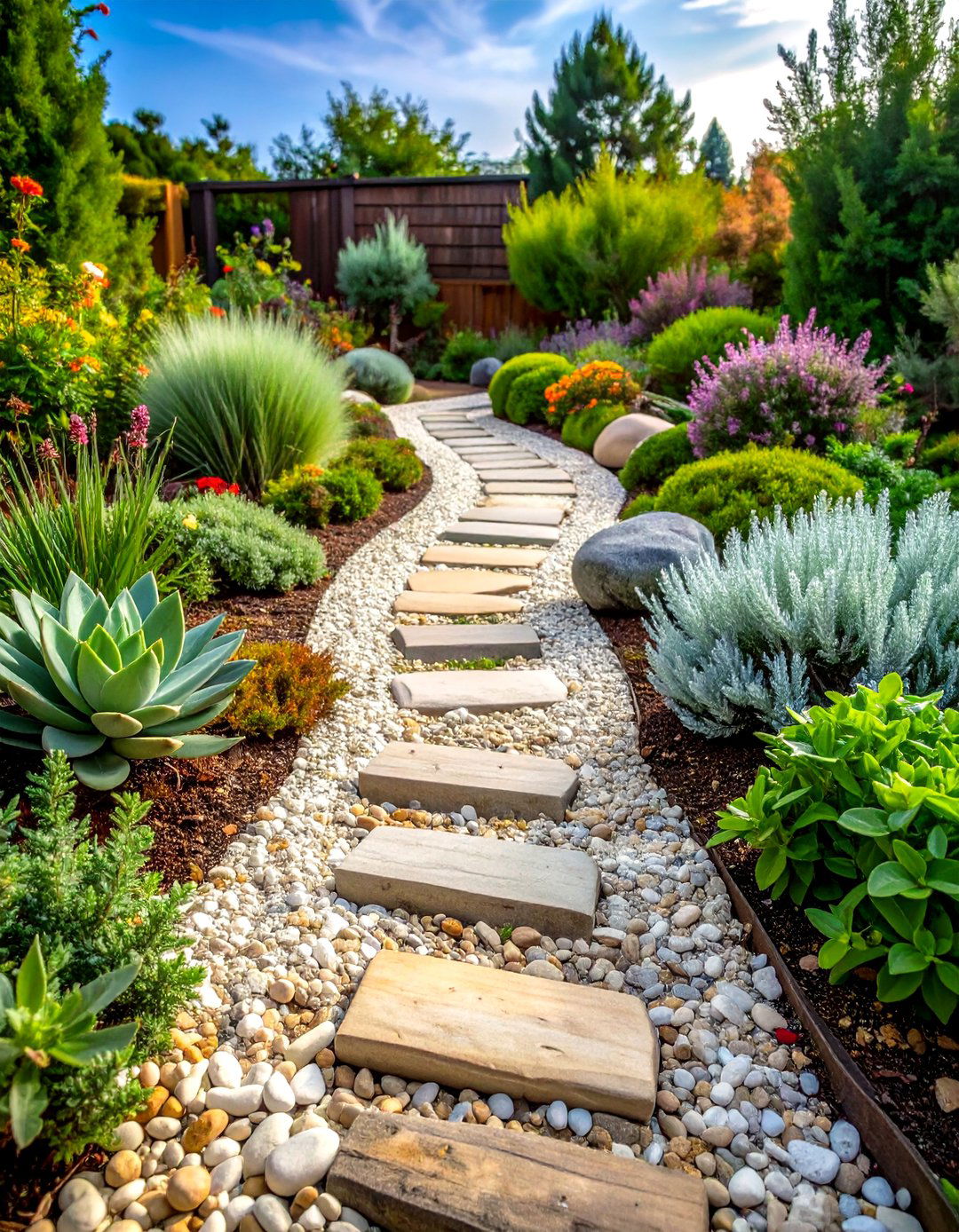
A soft, looping path made from bark chips, smooth pebbles, and fragrant thyme invites children to tiptoe, hop, and crawl while practising balance and descriptive language. Border the walkway with child-safe “touch-me” plants—fuzzy lamb’s-ear, velvety silver sage, and rubbery succulents—so kids can feel the difference between cool, silky, and bouncy textures. Add wind chimes and aromatic basil clusters at nose height to engage hearing and smell. Because every element sits flush with the ground, this Nursery Garden idea requires no raised edges, reducing trip hazards while promoting multisensory exploration.
playworld.com
2. Pollinator-Friendly Nursery Garden Patch
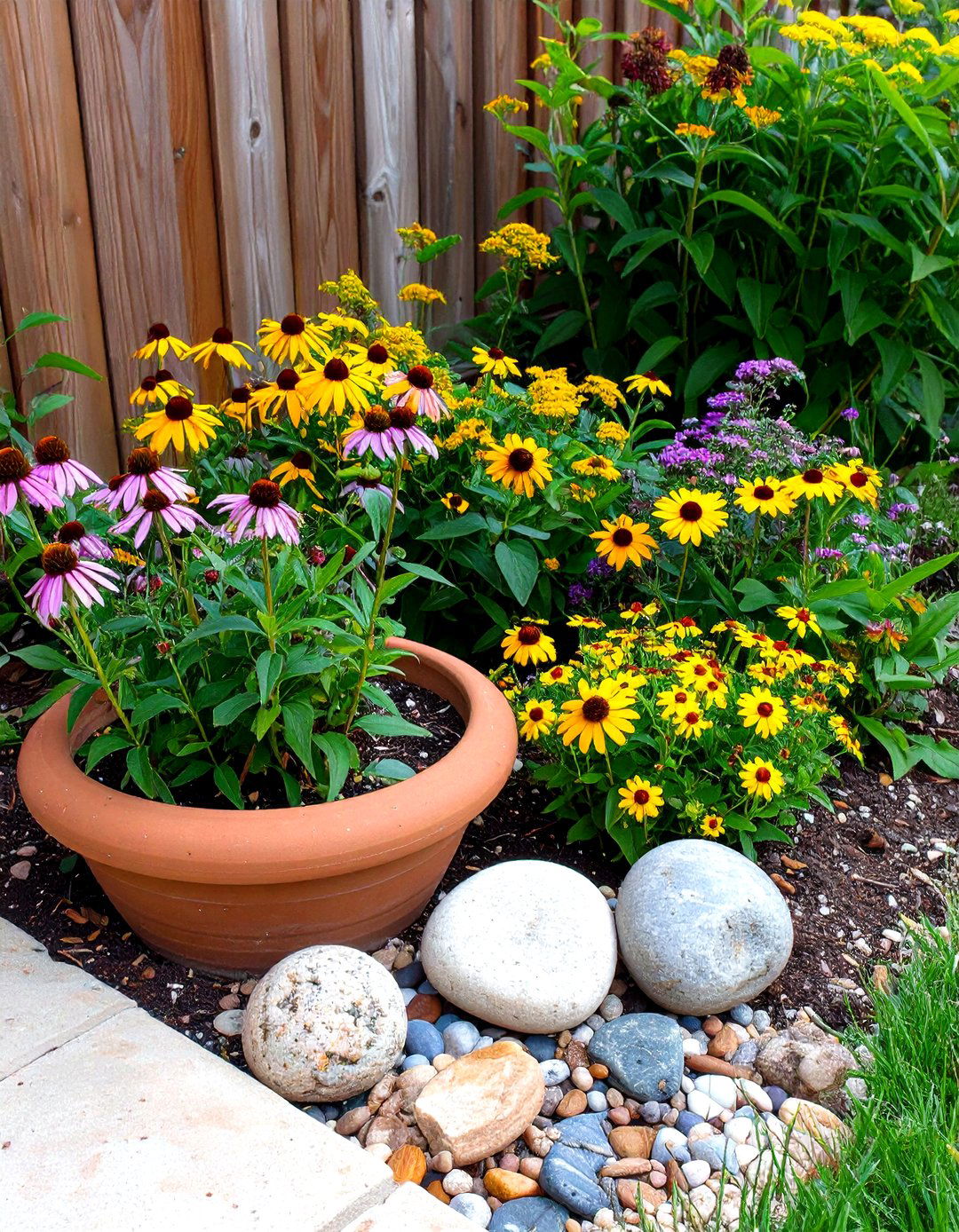
Planting nectar-rich natives such as purple coneflower, yarrow, and goldenrod turns a corner of the Nursery Garden into a living science lesson on bees and butterflies. Arrange flowers in big colour blocks so youngsters easily notice insect visitors, then add flat “landing pads” like zinnias and sunflowers for tiny hands to observe up close. An old terracotta saucer filled with marbles and water doubles as a safe pollinator drink station. Label each plant with a simple icon—bee, butterfly, or hummingbird—so pre-readers grasp who benefits from their blooms.
hinsdalenurseries.com
3. Vertical Nursery Garden Walls to Maximise Play Space
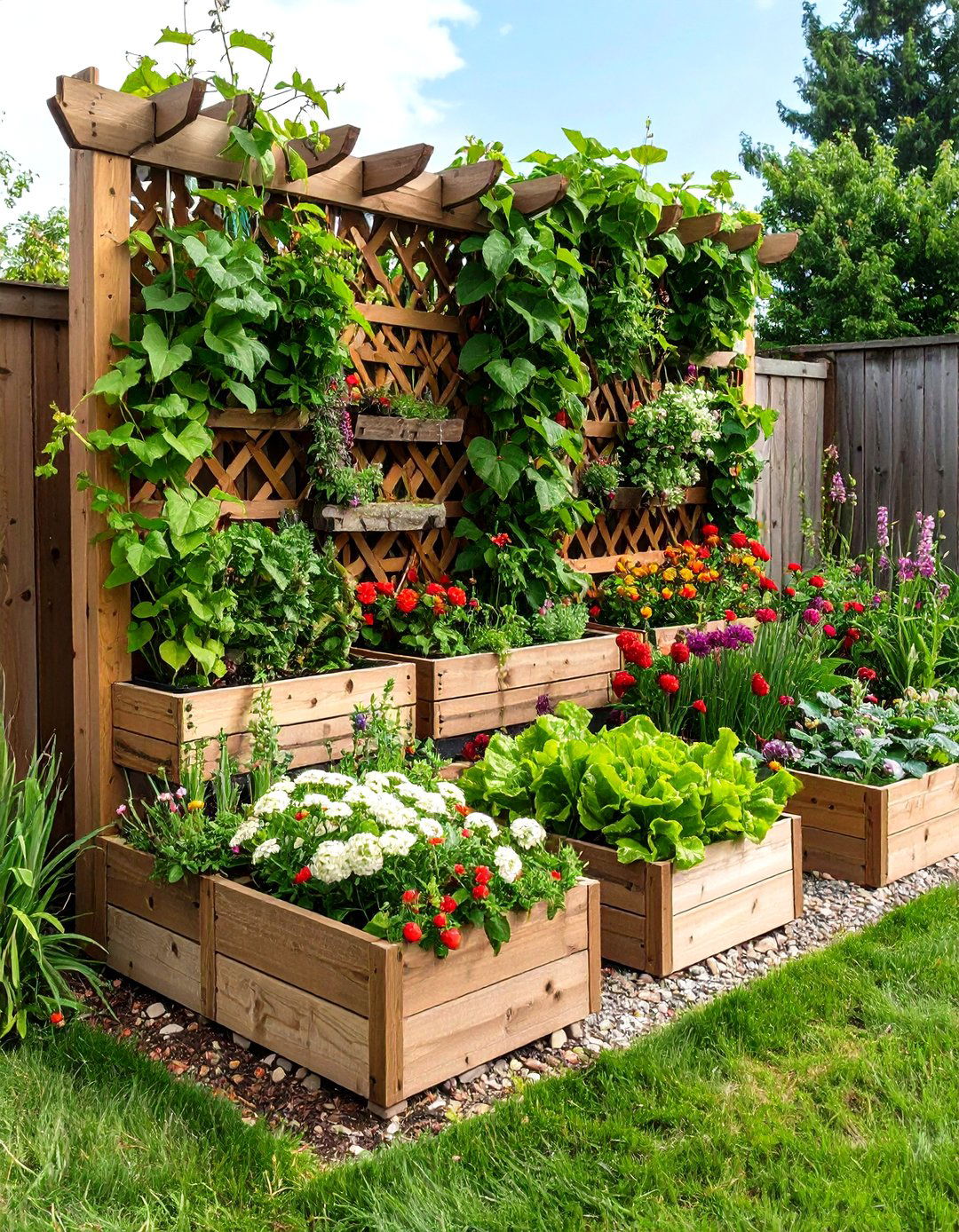
When play yards are small, go up. A cedar trellis wrapped with climbing beans, nasturtiums, and dwarf gourds frees precious ground room for running while giving children “peek-through” windows into buzzing leaf worlds. Fabric shoe organisers re-purposed as pocket planters let teachers assign each child a pouch for lettuce or strawberries, encouraging ownership and responsibility. Choose upright selections from the latest vertical-plant lists—foxglove, ‘Globemaster’ allium, and columnar boxwood—for height variety without bulk. This Nursery Garden wall doubles as a leafy privacy screen and fragrant art panel all season long.
bhg.com
4. Storybook-Themed Nursery Garden Beds

Transform raised beds into pages from favourite tales: a Peter Rabbit plot of crunchy carrots and radishes, or a Very Hungry Caterpillar trail of lettuce, tomatoes, and “one nice green leaf.” Painted wooden signs featuring book characters guide children through the Nursery Garden and spark literacy links during outdoor story time. Keep rows short so little arms can reach centres without stepping on soil, and surround each bed with low mint hedges for scent and pest deterrence. Seasonal costume days—think floppy bunny ears—turn harvests into interactive theatre.
5. Native Plant Nursery Garden for Local Wildlife
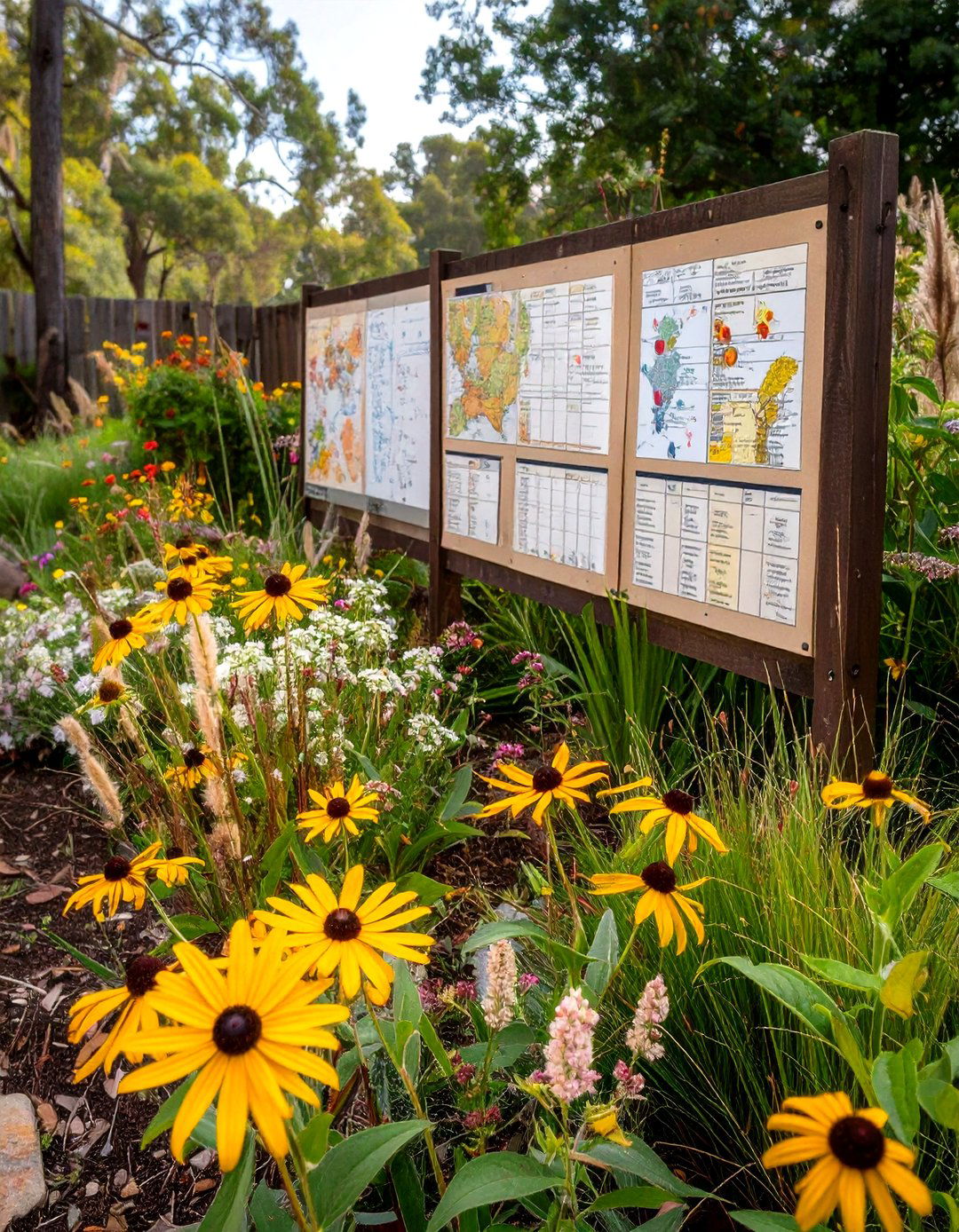
Using region-specific perennials—think black-eyed Susan, milkweed, or kangaroo grass—helps children see how their Nursery Garden supports birds and insects year-round, while requiring less water and fertiliser than exotic choices. Mark a simple colour-coded map showing bloom sequences so kids anticipate each month’s “surprise colours.” Fallen seed heads become winter bird buffets, giving teachers natural opportunities to discuss migration and seasons. Embracing natives follows 2025’s big design push toward ecological resilience and low-input gardening.
hinsdalenurseries.com
6. Edible Nursery Garden for Snack-Time Learning
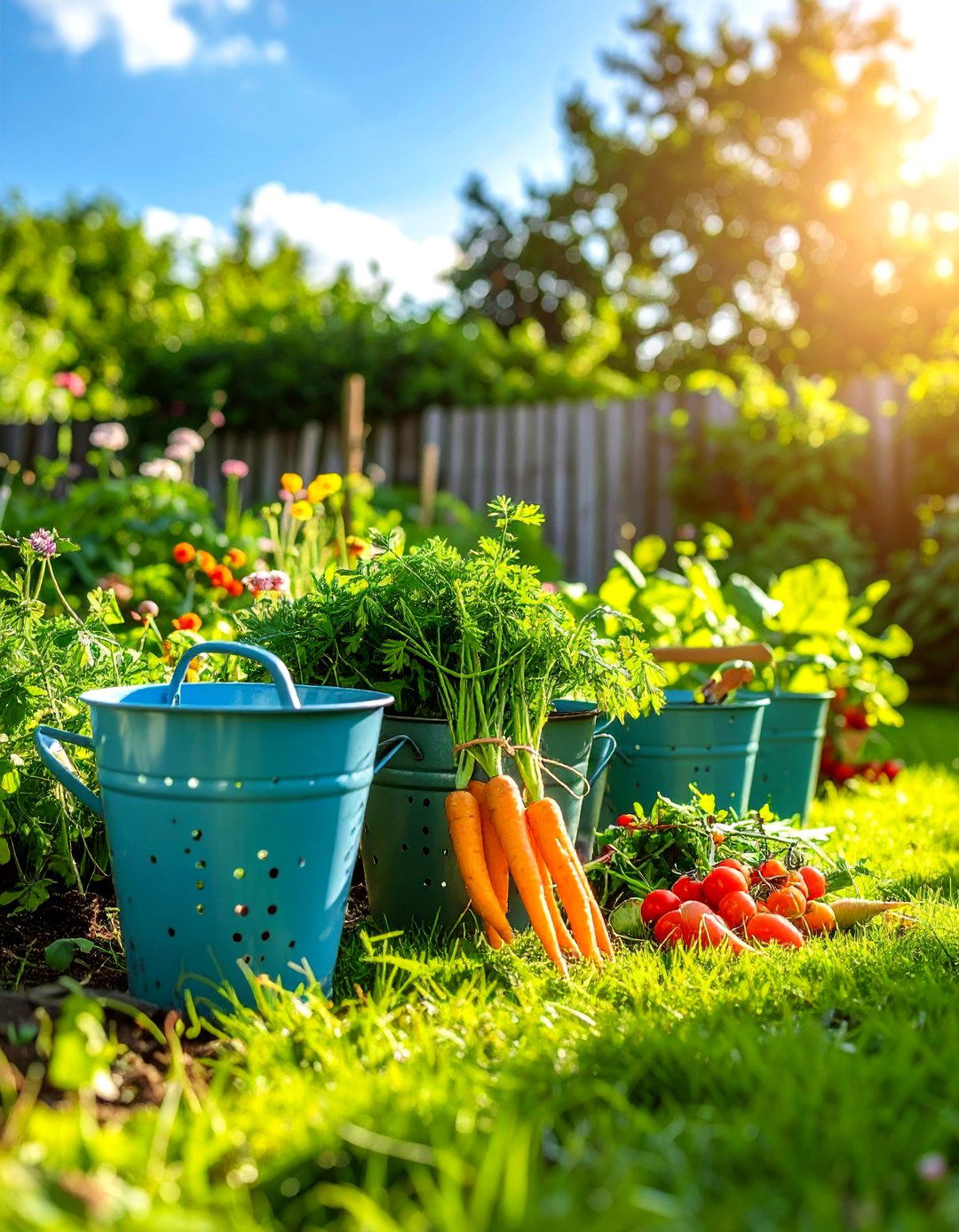
Dedicating one bed to quick-growing edibles lets toddlers taste the fruits (and veggies) of their labour minutes after picking. Grow sugar-snap peas along low netting, sprinkle rainbow carrot seeds in loose rows, and pop clusters of cherry tomatoes near a sunny wall. Provide child-sized colanders so harvesting feels official, then count, sort, and wash the produce for an instant math-and-nutrition lesson. Because everything is pesticide-free and at knee height, even the youngest gardeners can safely pluck and munch.
7. Butterfly Oasis Corner in the Nursery Garden

Lay a sunny triangle with host plants—milkweed for monarchs, parsley for swallowtails—and surround it with nectar stations like cosmos and verbena. An upcycled mud pie table filled with damp sand offers minerals and photo-worthy puddling behaviour. Encourage children to track chrysalis stages on a simple wall chart, reinforcing life-cycle vocabulary. Position a bench at toddler height, shaded by airy dill fronds, so quiet observation becomes part of daily routine in this magical Nursery Garden refuge.
playworld.com
8. Mini Meadow Nursery Garden for Biodiversity

Instead of a thirsty lawn, sow a pocket-sized wildflower meadow with clover, cornflowers, and dwarf poppies. 2025 garden-trend specialists call this “lived-in planting” that invites bees and introduces children to spontaneous beauty. Leave a meandering mown “maze” so kids can explore safely without trampling blooms, and add scavenger-hunt boards—“Find a purple flower, spot a beetle”—to spark observation. The low-maintenance meadow frees educators from weekly mowing while teaching natural succession and habitat value right inside the Nursery Garden.
homesandgardens.com
9. Color-Drenched Nursery Garden Borders
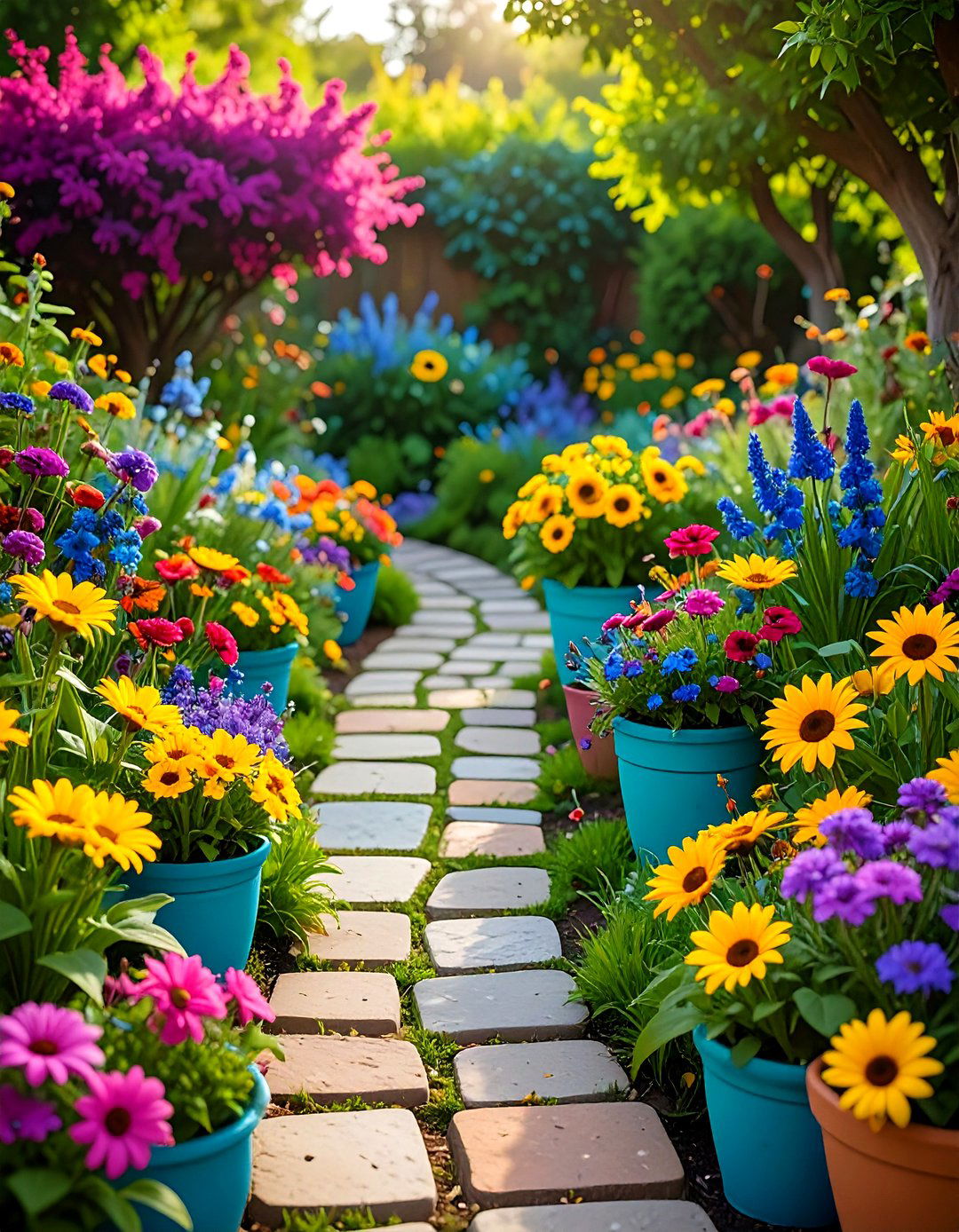
“Bold colour drenching” tops many 2025 trend lists, so choose a single hue—teal, magenta, or sunflower yellow—and repeat it in blossoms, painted pots, and stepping-stone mosaics. This visual rhythm helps toddlers identify patterns and boosts photo appeal for proud parents. To avoid sensory overload, keep the colour zone to a defined border and soften edges with silver foliage or ornamental grasses. Integrating colour theory here turns the Nursery Garden into an outdoor art studio.
pindersnursery.com
10. Water-Smart Drip-Irrigated Nursery Garden

Climate-resilient gardening isn’t just adult talk; little ones grasp the concept quickly when they watch slow drips quench roots without overspray. Lay visible tubing atop mulch so kids see how water travels, then let them time how long barrels take to empty after a rain. Plant drought-tough favourites such as blanket flower, rosemary, and sedum, cushioning wetter-needing lettuces nearer emitters. The Nursery Garden now doubles as a sustainability lab that meets evolving weather challenges.
dripworks.com
11. Child-Safe Fragrant Herb Nursery Garden
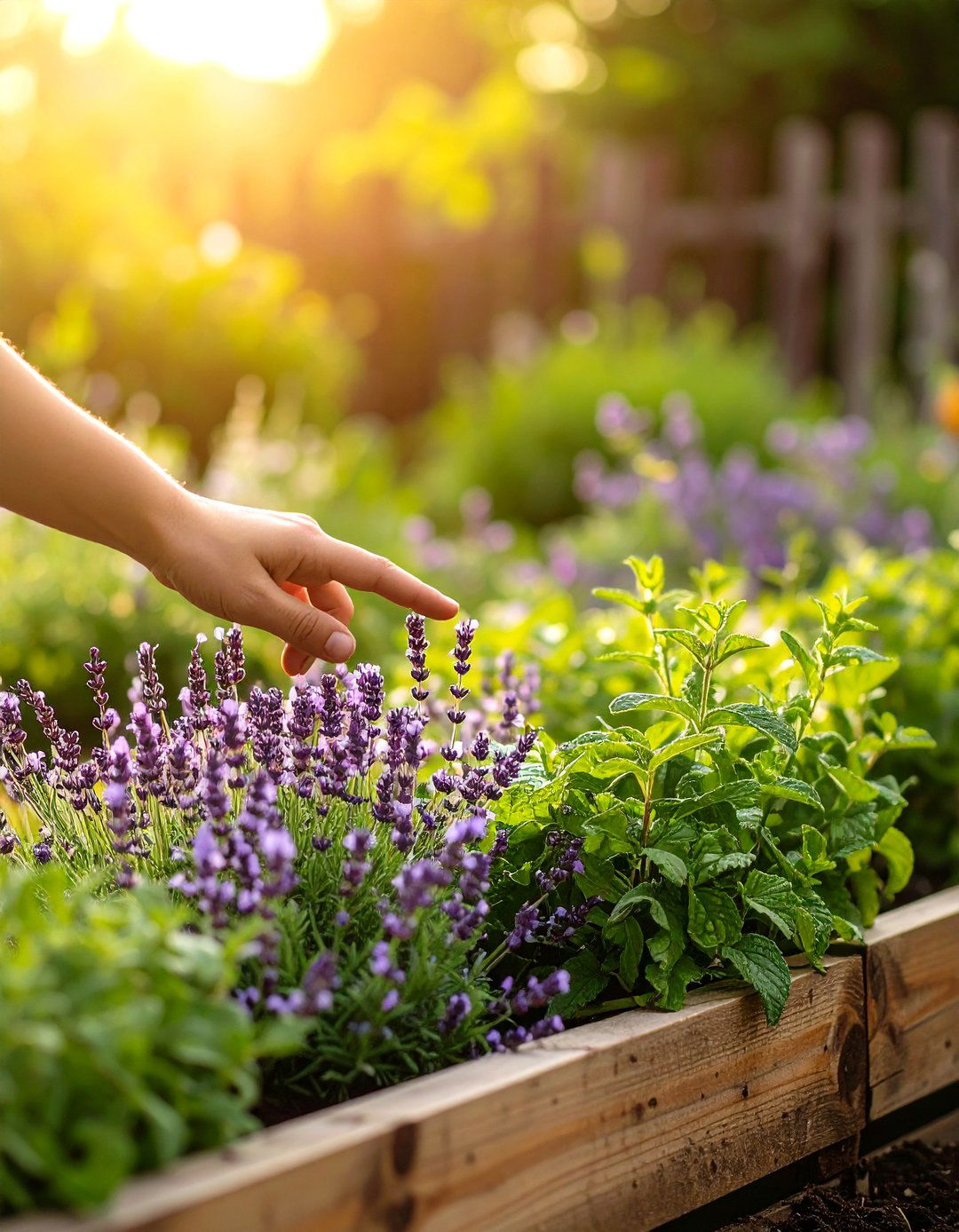
Dwarf lavender, chocolate mint, and lemon balm release inviting scents with the lightest brush, turning every transition from slide to sandbox into aromatherapy. Follow KidsGardening safety lists to avoid toxic or sharp species and encourage “two-finger touch” rules to protect plants. Provide tiny scissors so pre-K chefs can snip herbs into water pitchers or homemade playdough, reinforcing fine-motor skills. This sensory-rich Nursery Garden zone also deters mosquitoes while attracting beneficial insects.
kidsgardening.org
12. Sunflower Teepee Hideout in the Nursery Garden
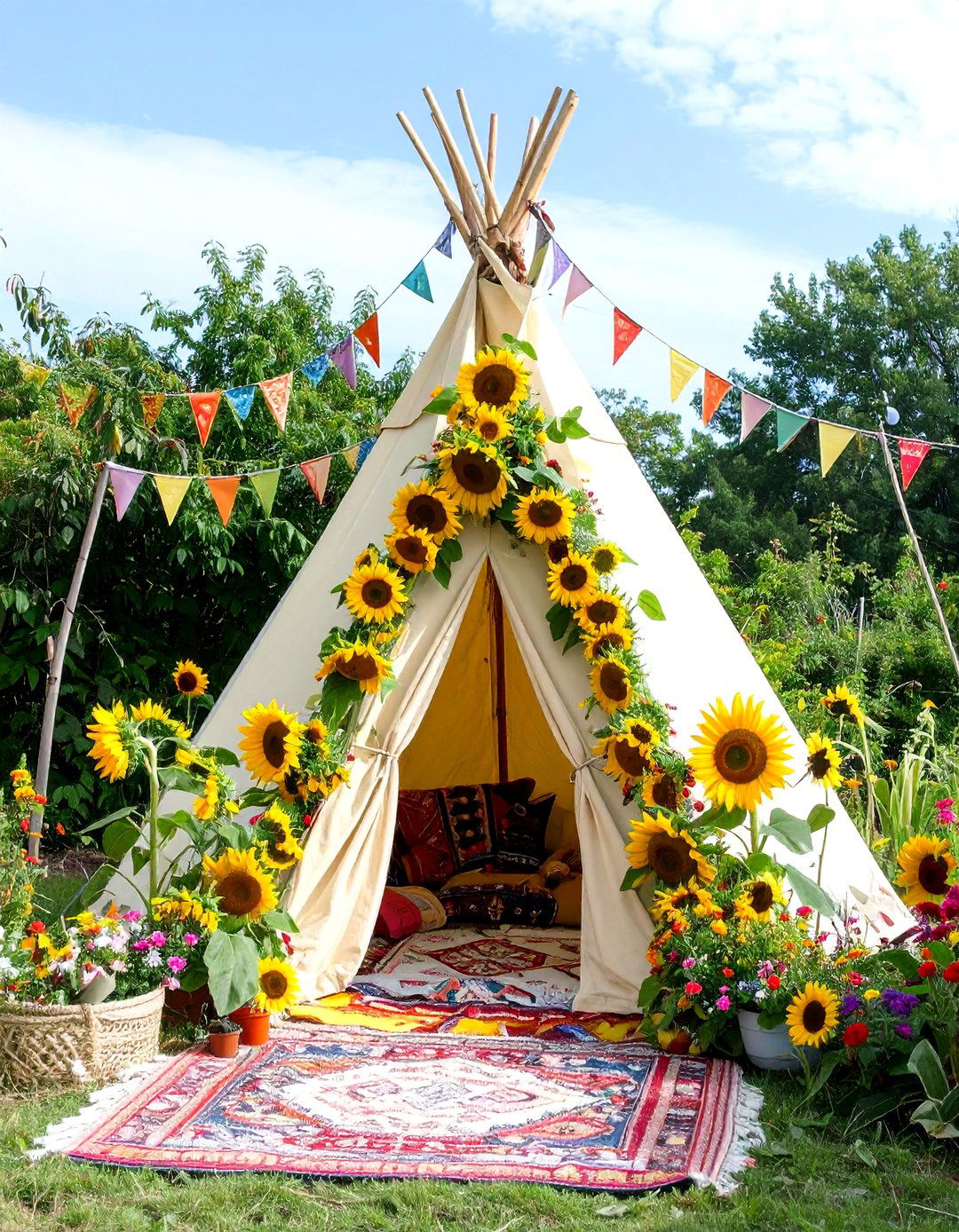
Sow a wide circle of branching sunflowers and scarlet runner beans, leaving a doorway gap that quickly transforms into a living fort. Children enter a shaded green tunnel where ladybugs hunt aphids and chickadees perch overhead. As blossoms mature, harvesting heads for seed-counting games teaches maths. Choose kid-friendly varieties highlighted in “plants for kids” resources—such as ‘Mongolian Giant’ or dwarf ‘Teddy Bear’—to balance height and manageability. This Nursery Garden teepee becomes summer’s coolest reading nook.
growjoy.com
13. Textural Nursery Garden with Lamb’s-Ear & Grasses
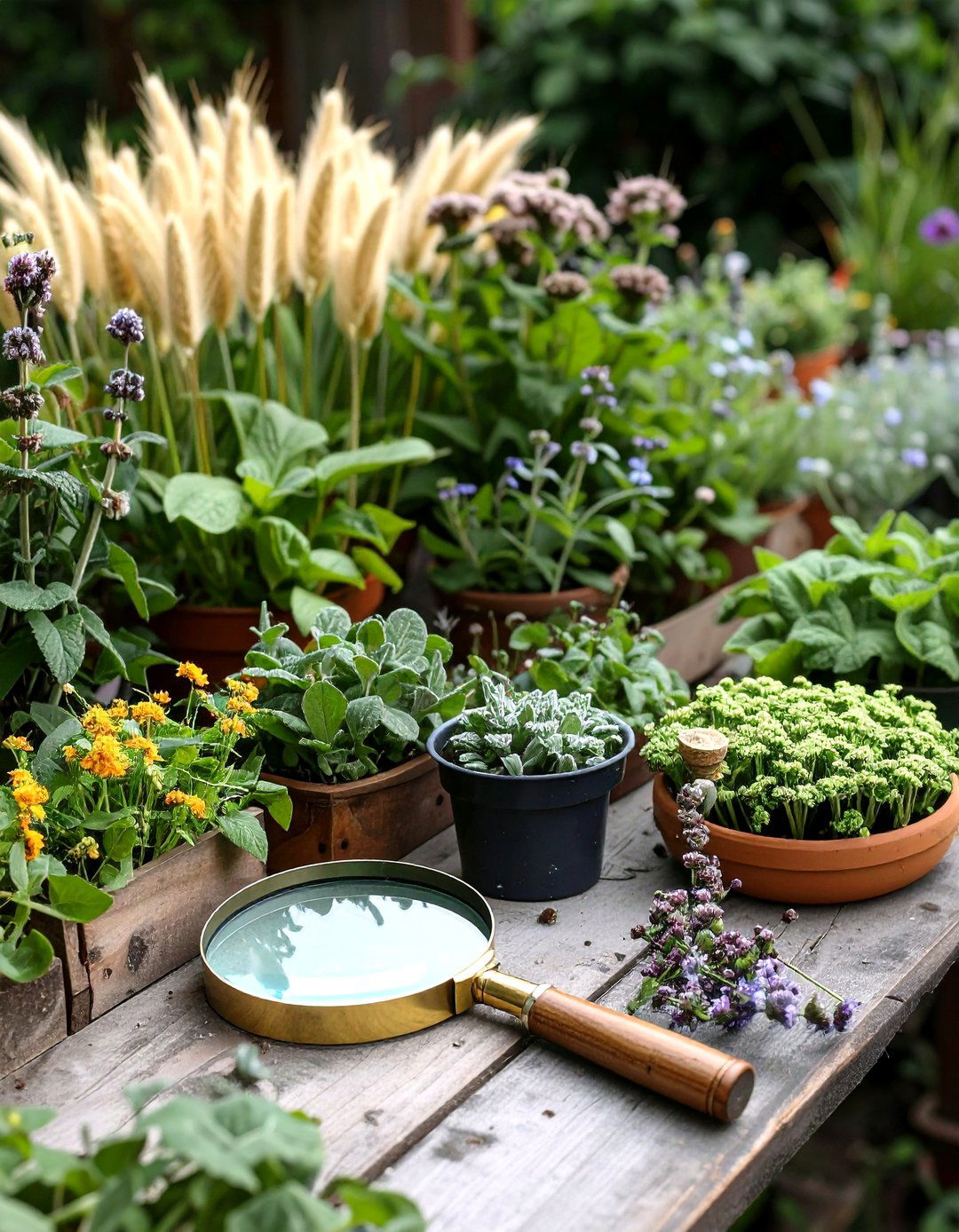
Contrasting textures encourage descriptive language: “feathery,” “spiky,” “velvety.” Pair lamb’s-ear under spring bulbs, weave ornamental foxtail barley behind, and flank paths with button-shaped milkwort. A magnifying glass station invites children to compare leaf hairs or seed awns. Because most choices are low water and pest resistant, maintenance stays simple. This tactile focus shows how the Nursery Garden can be both science lab and speech-development arena.
14. Climate-Resilient Nursery Garden Plantings
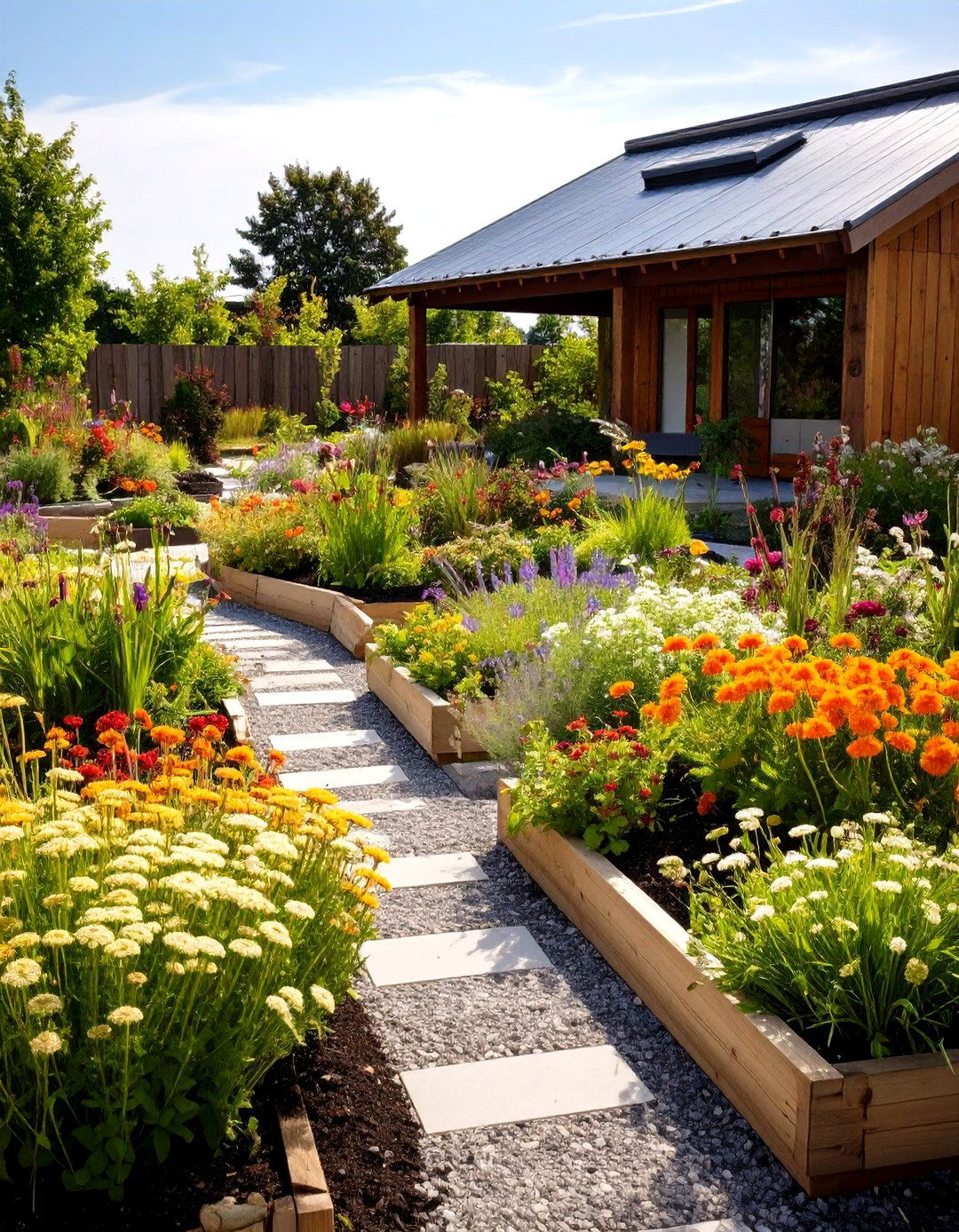
Extreme weather is now part of children’s vocabulary; demonstrate solutions by mixing fire-resistant yarrow, flood-tolerant sedge, and heat-loving blanket flowers in one resilient border. Label each with a cloud, flame, or sun icon to visualise which stress they handle. Incorporate permeable gravel basins so kids see runoff soak in rather than puddle. The lesson: A well-designed Nursery Garden can thrive no matter what skies deliver.
dripworks.com
15. Living Fence Nursery Garden Made of Berry Bushes
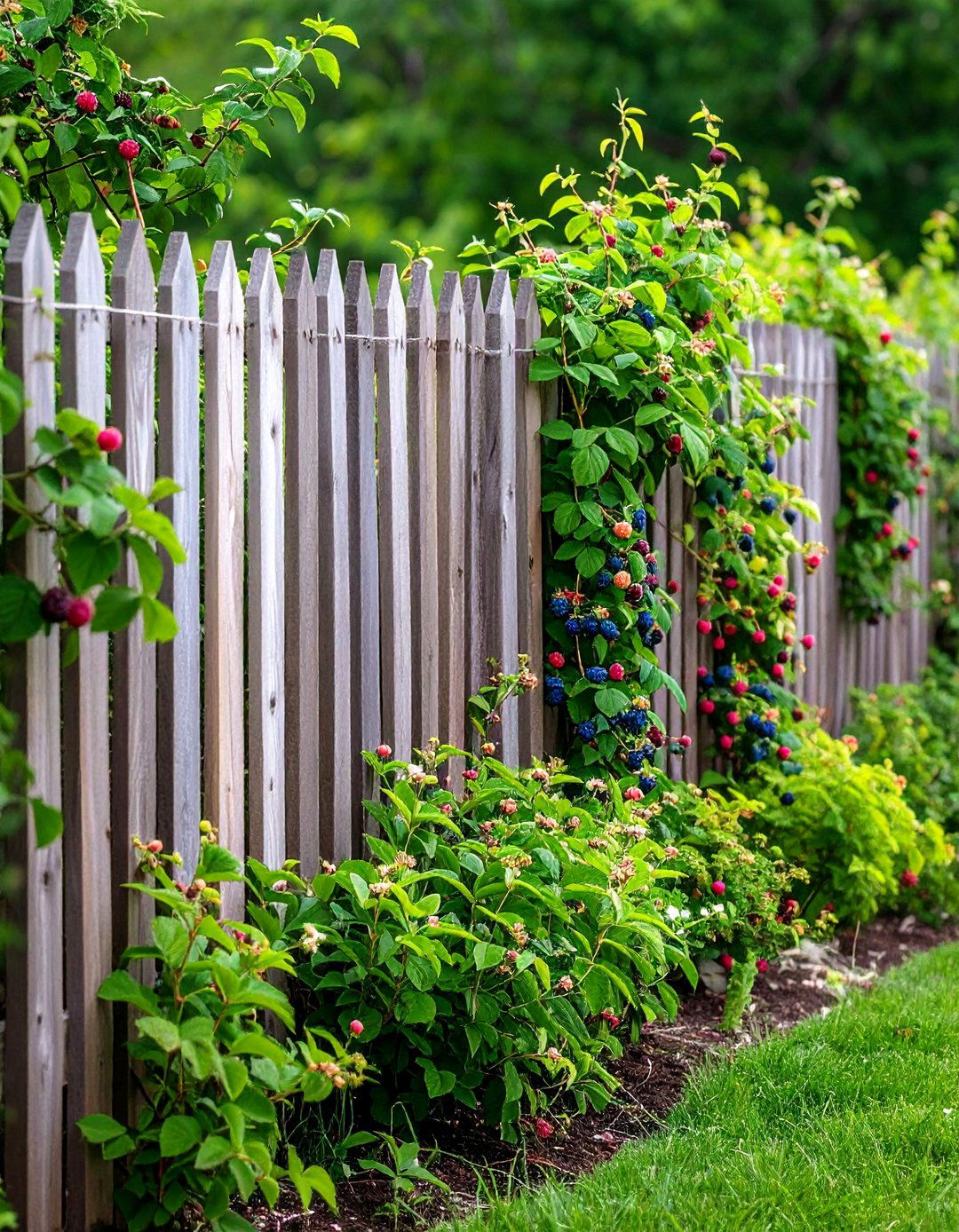
Swap chain-link for a double row of thornless raspberries and evergreen honeyberries. These shrubs create a safe boundary, provide bird habitat, and deliver snackable harvests for little pickers. Plant on staggered drip lines so inner and outer rows both receive moisture. Weave simple twine between posts at toddler eye-level to train canes horizontally and form leafy “windows.” The living fence demonstrates multifunctional design in the Nursery Garden—beauty, yield, and security in one green sweep.
16. Loose Parts Play Zone Integrated into the Nursery Garden
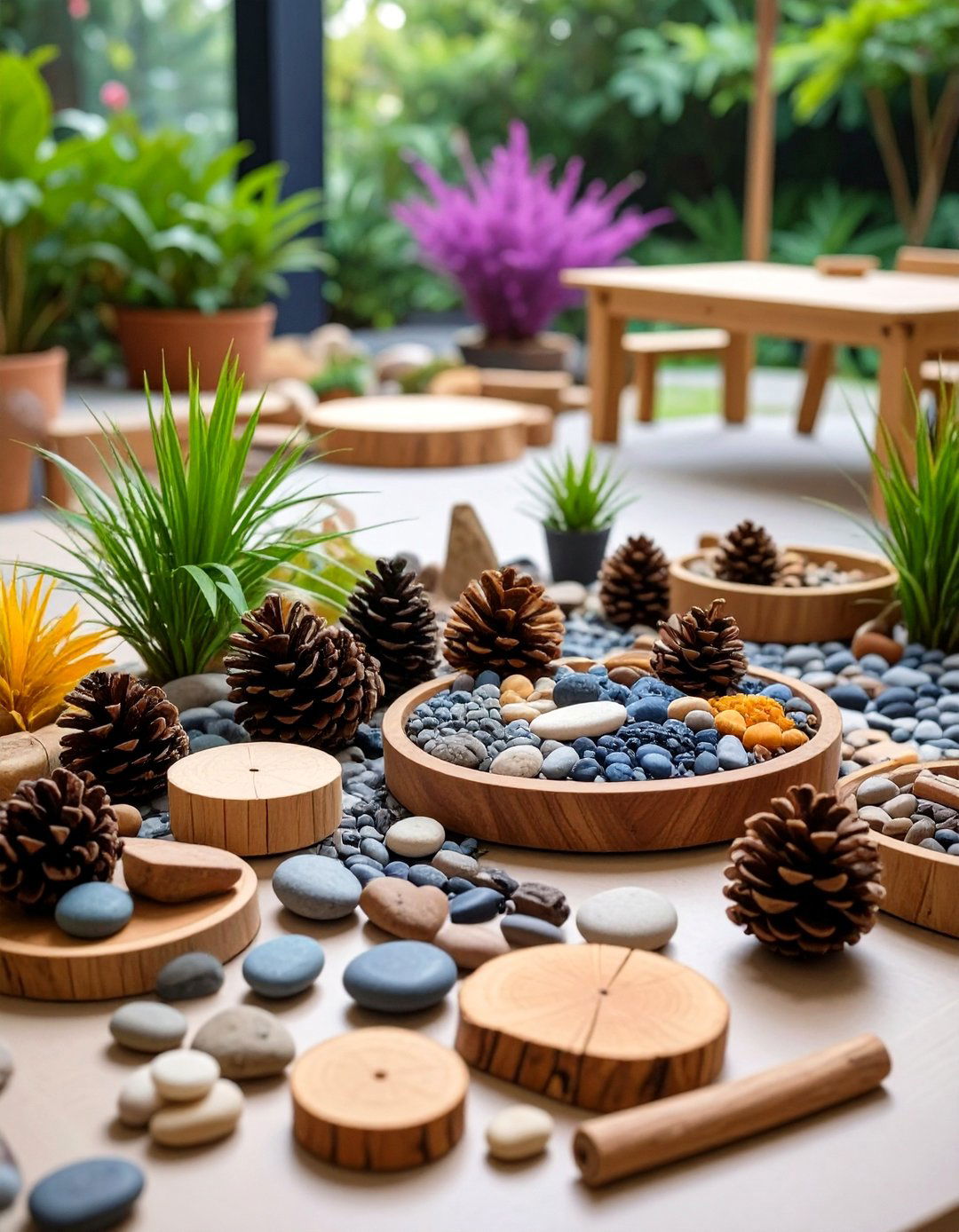
Gather pruned sticks, pinecones, and smooth river stones in open baskets so children can build fairy houses beneath shrub canopies while caregivers weed nearby beds. Encourage self-directed creativity by adding cross-cut wood slices for stacking. Because materials come from on-site maintenance, the play zone reinforces cyclical thinking—nothing becomes waste. Post a photo board showing seasonal changes so the Nursery Garden’s resources stay appreciated year-round.
17. Raised Bed Nursery Garden at Toddler Height
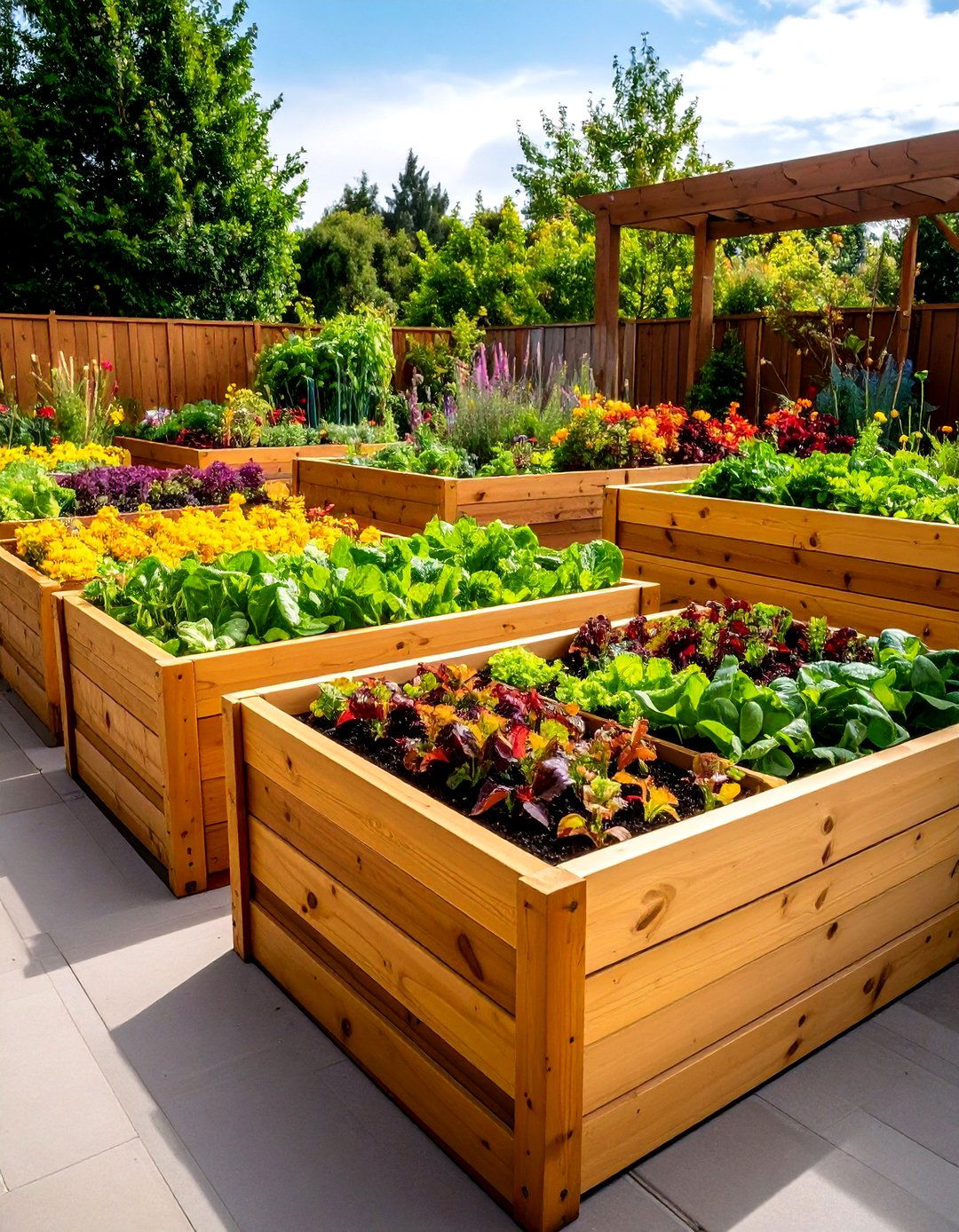
Construct 30-centimetre-deep cedar boxes with wide rims that double as perching benches. The elevated edge reduces soil compaction and keeps little feet from wandering across seedlings. Colour-code bed corners—red, blue, green, yellow—so class groups rotate chores easily. Built-in trellis hoops accept shade cloth for summer or clear plastic in winter, extending the Nursery Garden calendar without complex hardware.
18. Wildlife Observation Nursery Garden Station
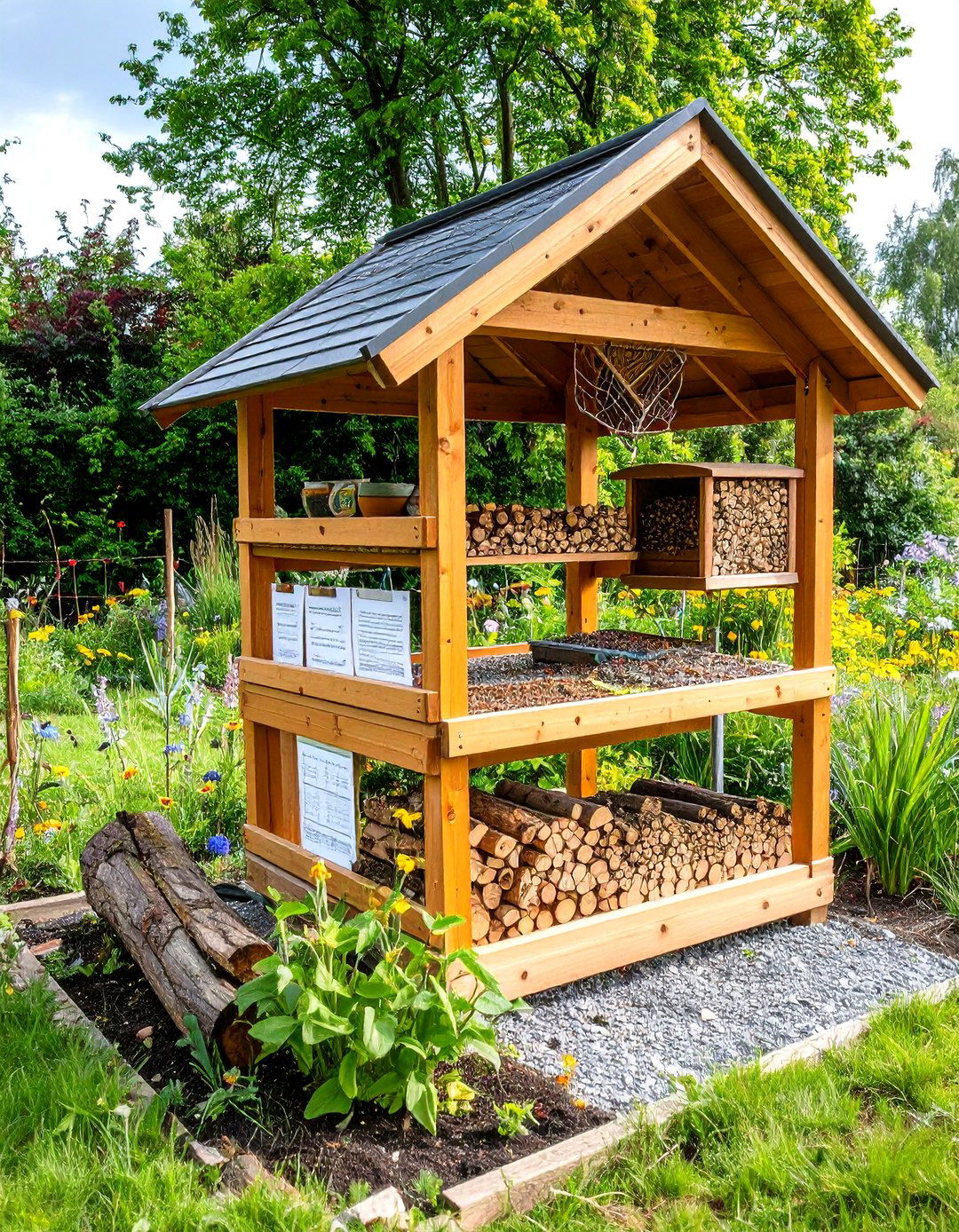
Install a child-height pollinator house, bird feeder, and shallow log pile beside a reflective observation window. Provide clipboards with simple tally sheets—bees, beetles, birds—so youngsters practise counting and species recognition. Over time, graphs of sightings illustrate biodiversity improvements linked to their gardening efforts. This citizen-science node turns the Nursery Garden into a mini field station and fosters stewardship pride.
19. Seasonal Nursery Garden Rotation Plan
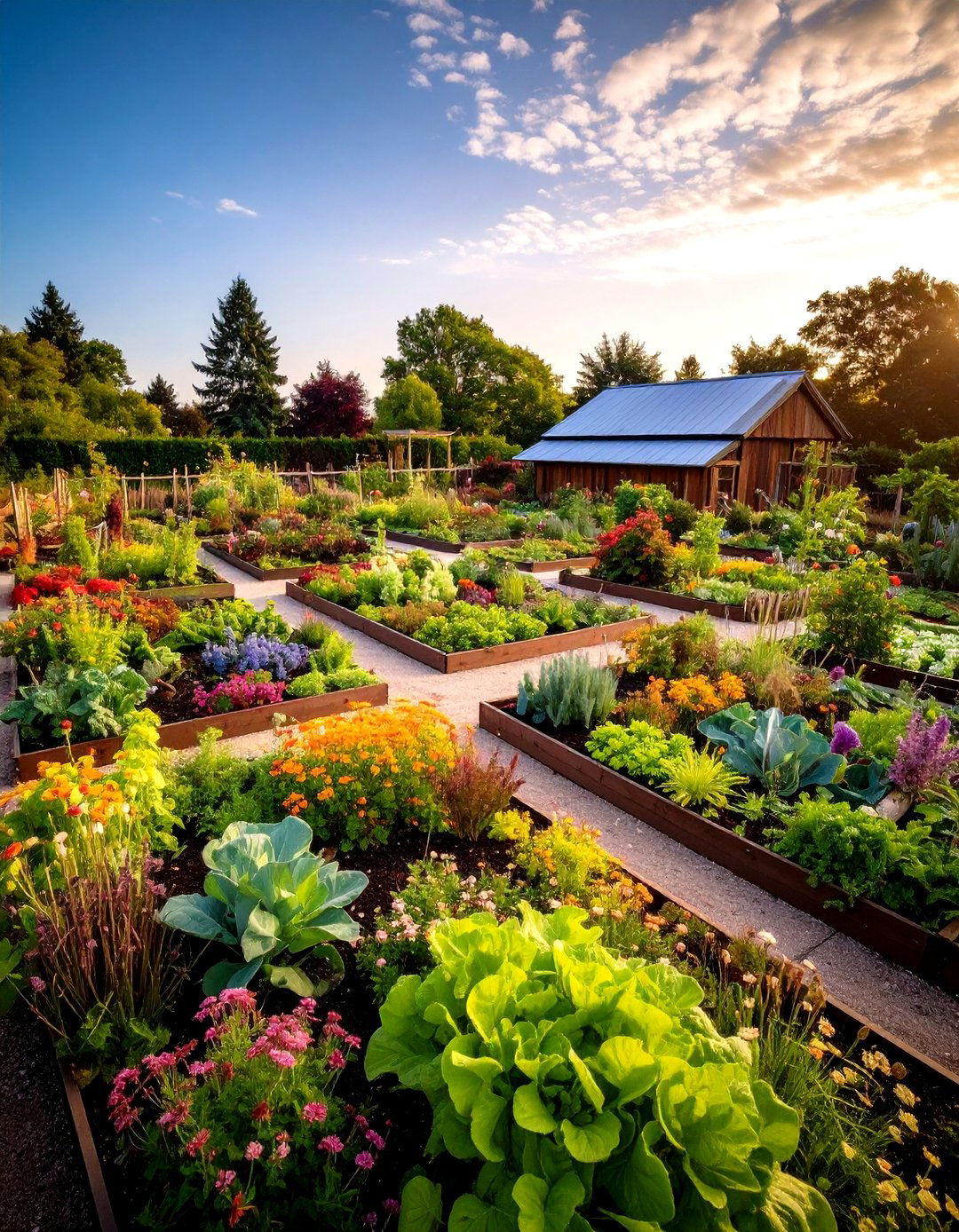
Divide beds into four wedges—cool-season greens, warm-season edibles, late-summer flowers, and overwintering cover crops—and flip each clockwise every quarter. Display a large wheel poster indoors so children anticipate upcoming tasks: sowing peas, planting pumpkins, scattering crimson clover. Rotations teach soil health, pest prevention, and calendar literacy, proving a Nursery Garden thrives on planning as much as planting.
20. Compost Corner Nursery Garden for Hands-On Science
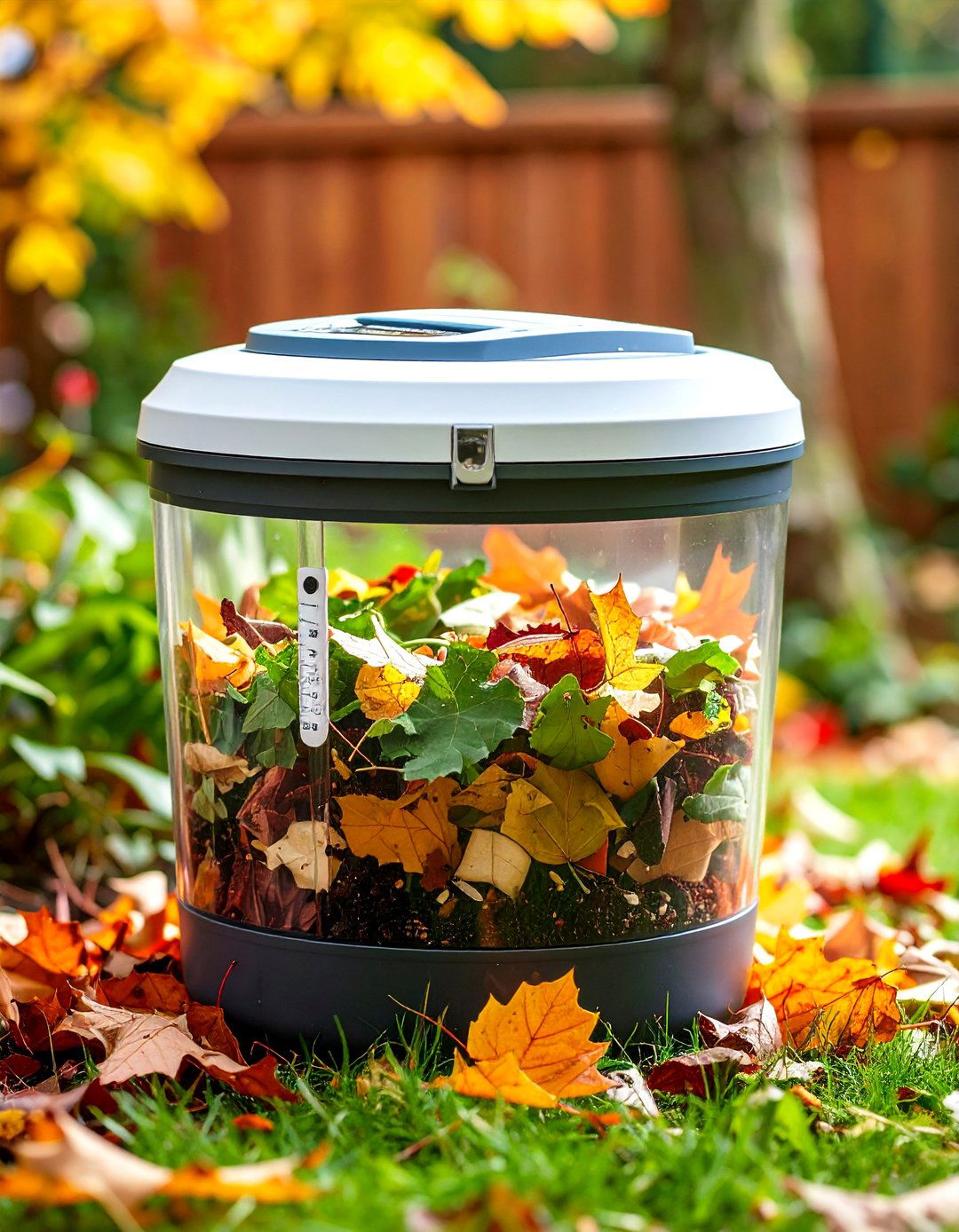
A clear-sided tumbler or simple pallet bin tucked behind sheds gives kids front-row seats to decomposition. Layer snack scraps with fall leaves, then hand out mini thermometers to monitor heat. When crumbly compost emerges, students spread it back onto beds, closing the nutrient loop they initiated. This earthy cycle anchors sustainability education inside the Nursery Garden with visible, wriggling evidence.
21. Vertical Pot-Painting Wall Art Nursery Garden
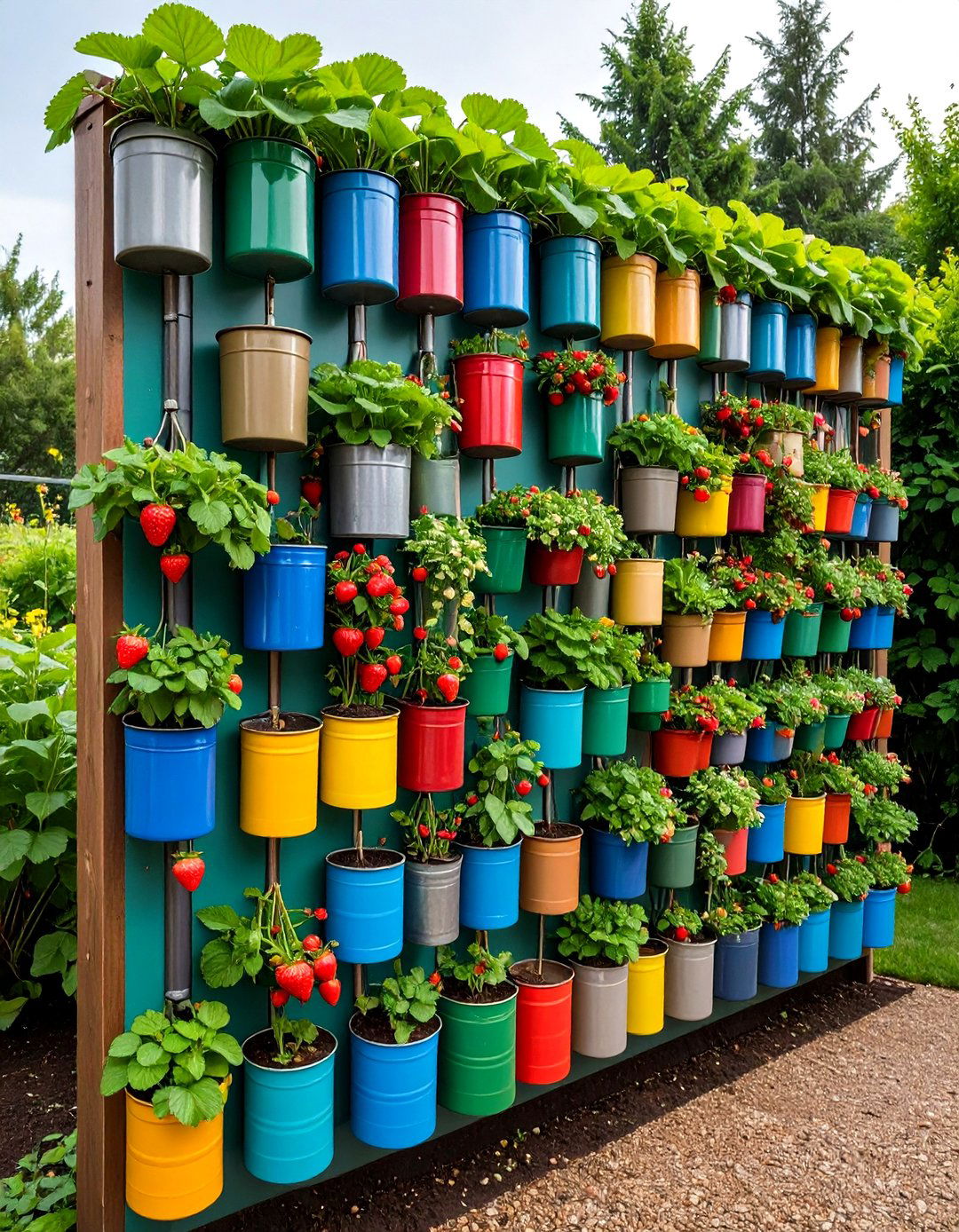
Mount recycled rain gutters or colourful cans along a fence and hand children outdoor paint pens to decorate them before planting cascading strawberries or nasturtiums. Seasonal repainting days keep artwork fresh and celebrate growth milestones. Because the wall uses lightweight containers and minimal substrate, it suits hard-surface urban courts where ground planting is limited. Creativity, colour, and produce share the same Nursery Garden canvas.
22. Fire-Resistant Nursery Garden Buffer Zone
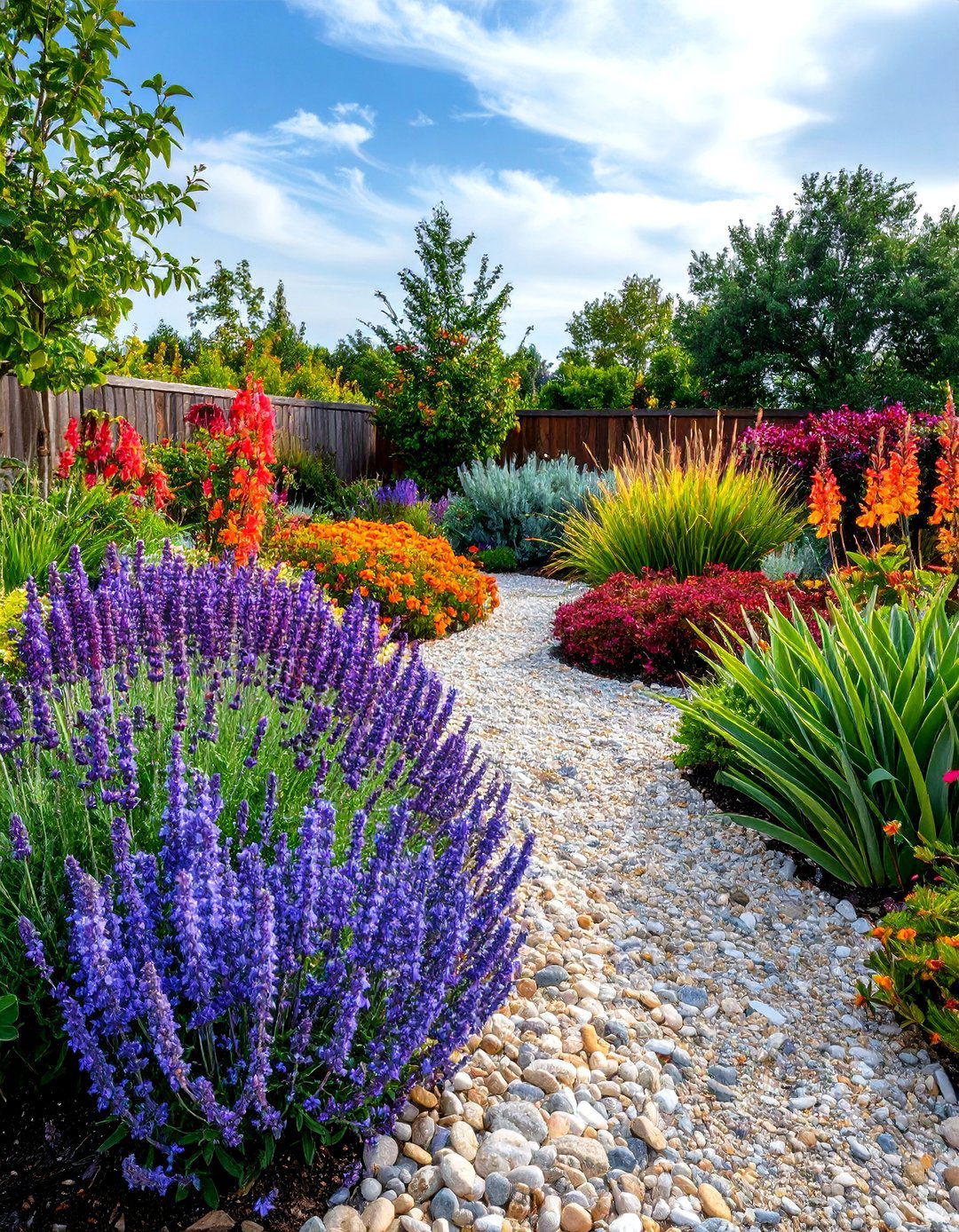
If your region faces wildfire risk, create a 1-metre ring of low-resin, high-moisture plants such as sage, ice plant, and California fuchsia around wood structures. Replace mulch with gravel to reduce ember catch, and teach children why “defensible space” matters. Demonstrations with safe tea-light “ember jars” show how sparks travel and why hydrated plants slow flames. This practical addition future-proofs the Nursery Garden while easing community anxieties.
dripworks.com
23. Greenhouse Nook Nursery Garden for Year-Round Seeds
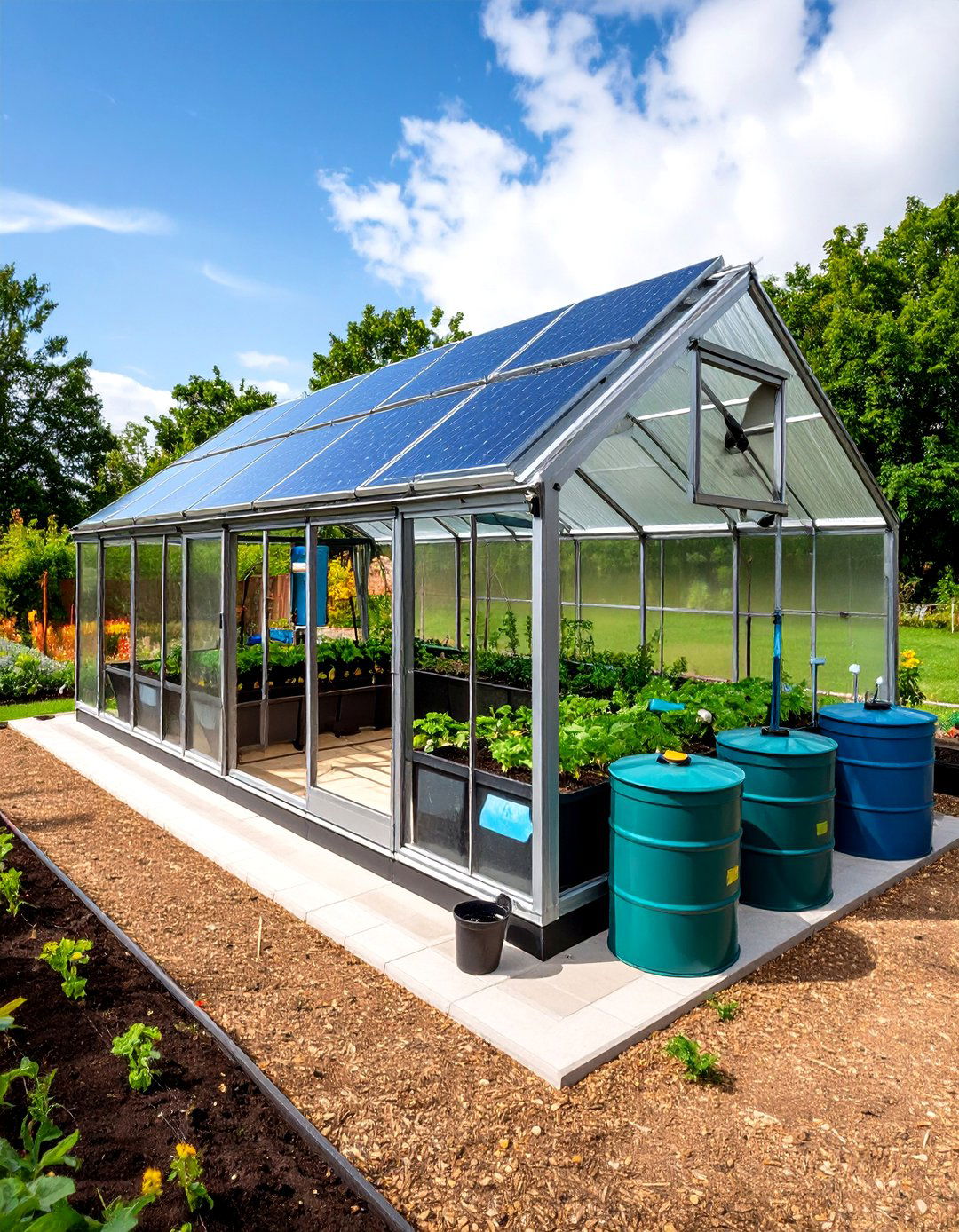
A pint-sized polycarbonate greenhouse—no higher than 1.5 metres—gives classes warm, protected benches for winter lettuce, sweet peas, and science fair experiments. Solar-powered fans and rain-barrel drip keep operations sustainable. Children track temperature swings on a daily graph, learning microclimate management. By spring, transplanting vigorous seedlings into outdoor beds proves their Nursery Garden is truly four-season.
24. Quiet Reading Bench Shaded by Trees in the Nursery Garden
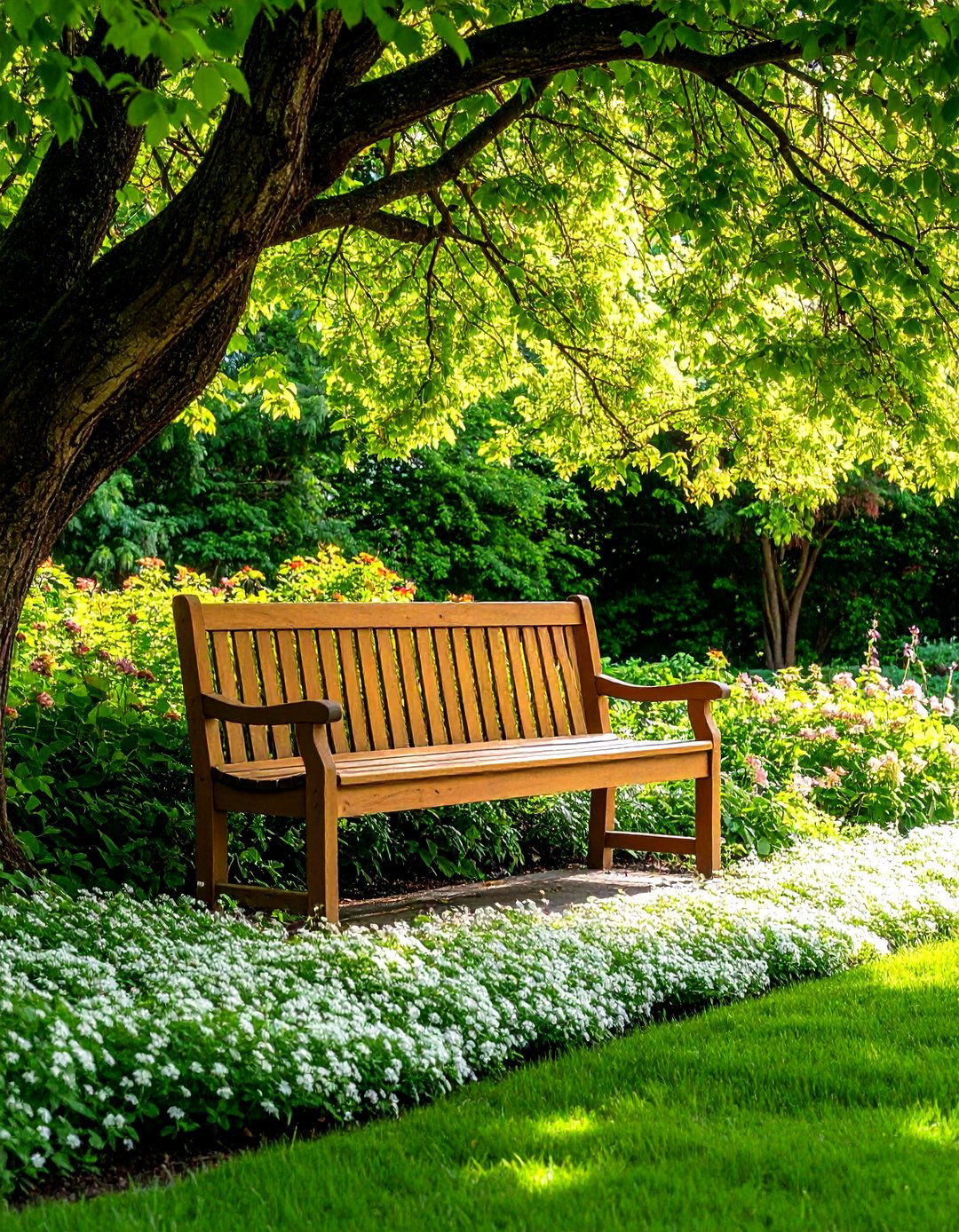
Nestle a low bench beneath a fast-growing shade tree like silver maple or thornless honey locust—both playground-approved for sturdy limbs and filtered light. Add root-zone groundcovers—sweet woodruff or creeping thyme—that release gentle scents when little shoes swing. Laminate favourite nature-themed picture books for outdoor use, turning this green alcove into a calm decompression spot within the bustling Nursery Garden.
playworld.com
25. Rainbow Zinnias Parade Nursery Garden Row

Finish with a flourish: sow zinnias in colour order—red to violet—along the main footpath. These fast, kid-proof flowers bloom for months and beg to be picked for classroom bouquets or colour-sorting games. Encourage children to track which hue opens first, tallest, or attracts the most butterflies. When frost finally arrives, drying heads for winter seed packets teaches saving and sharing. The riot of petals offers a joyful daily reminder of the Nursery Garden’s endless cycle of growth and giving.
growjoy.com
Conclusion:
A thoughtfully crafted nursery garden weaves safety, sustainability, and story into every petal and pathway. By layering sensory textures, wildlife habitats, climate-wise plantings, and creative play zones, you’ll cultivate not just plants but curiosity, resilience, and environmental empathy in young hearts. Whether your canvas is a sprawling yard or a single trellis on a balcony, these ideas let you tailor vibrant, low-maintenance spaces that thrive through seasons—and spark lifelong connections between children and the living world outside their classroom doors.



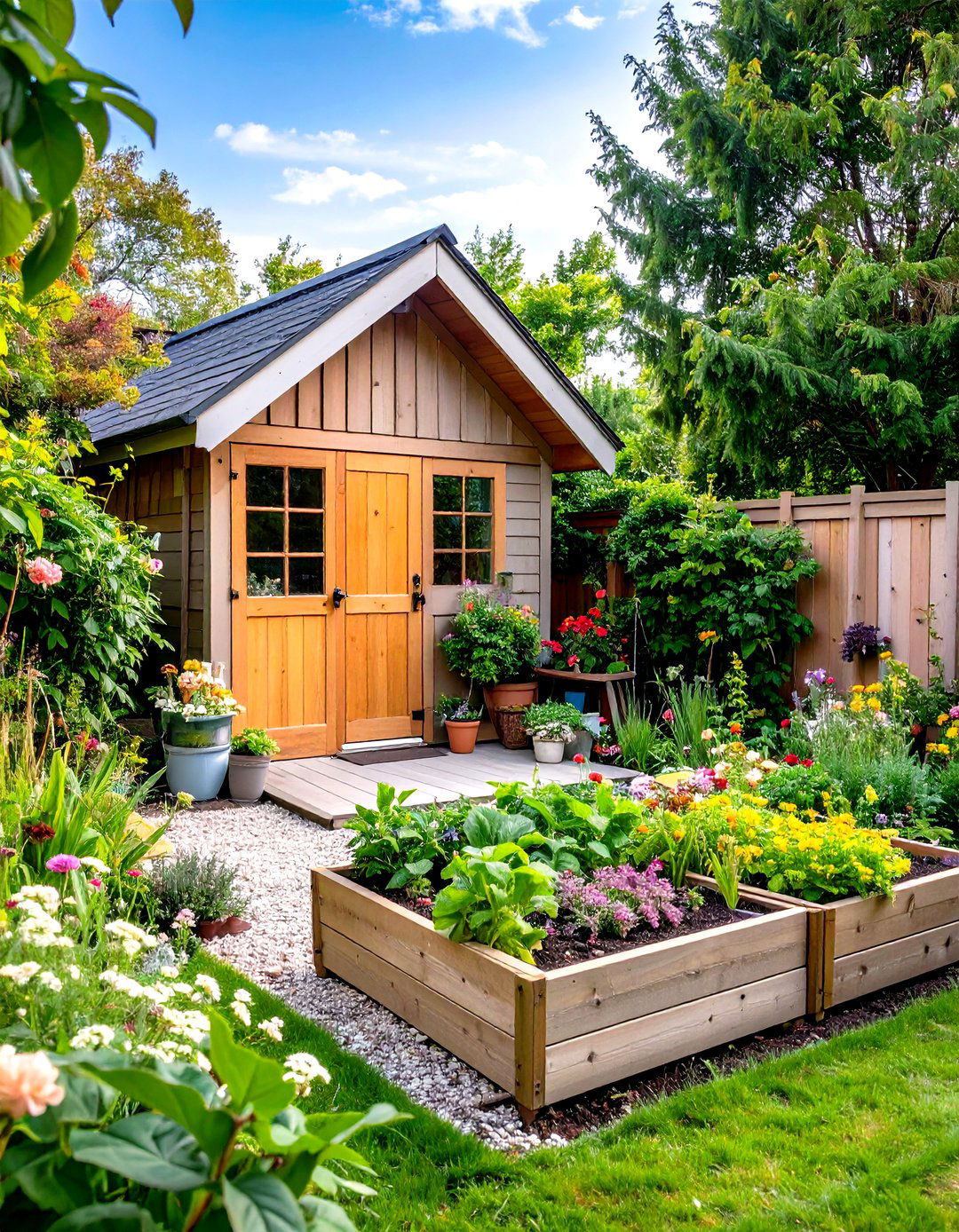
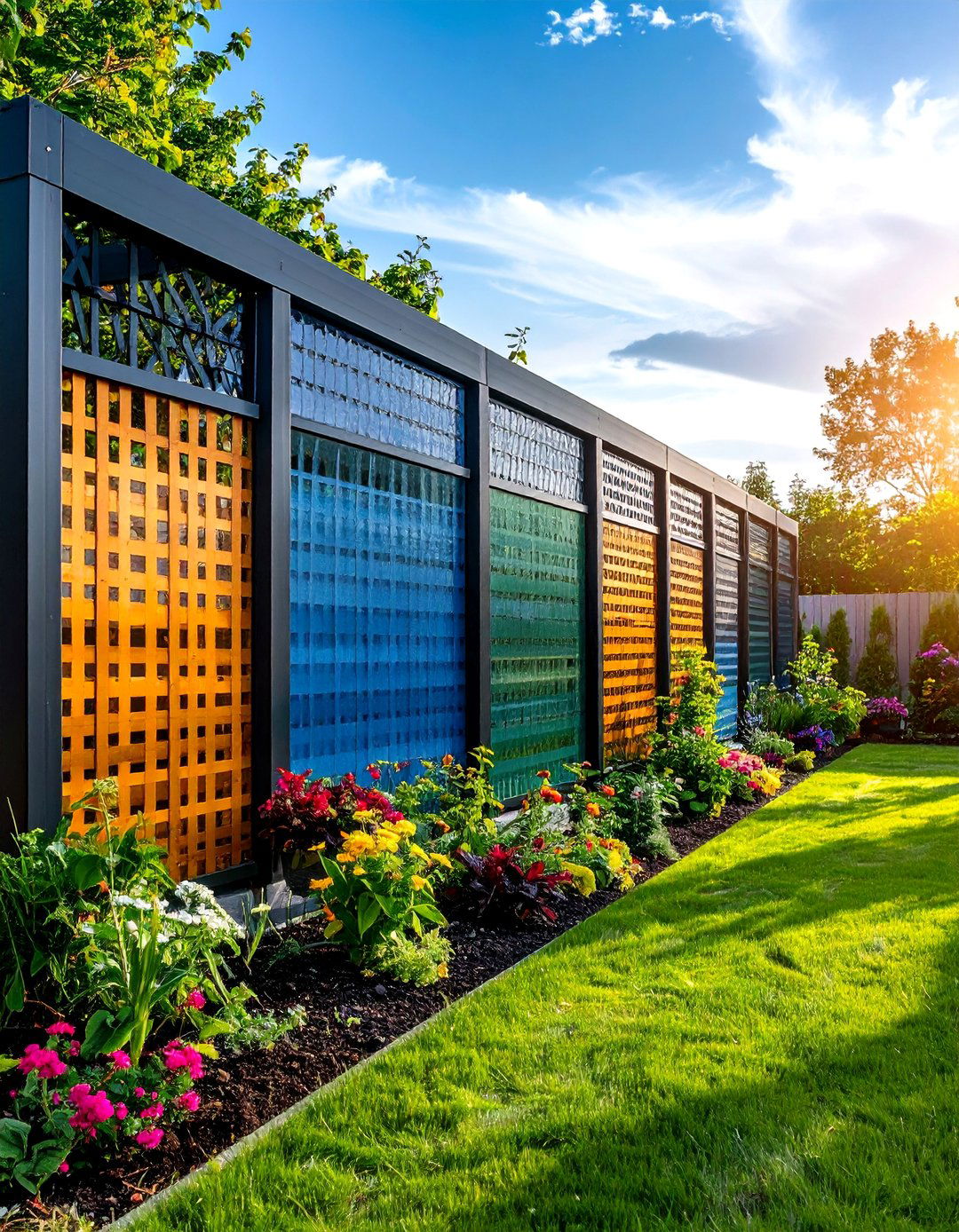

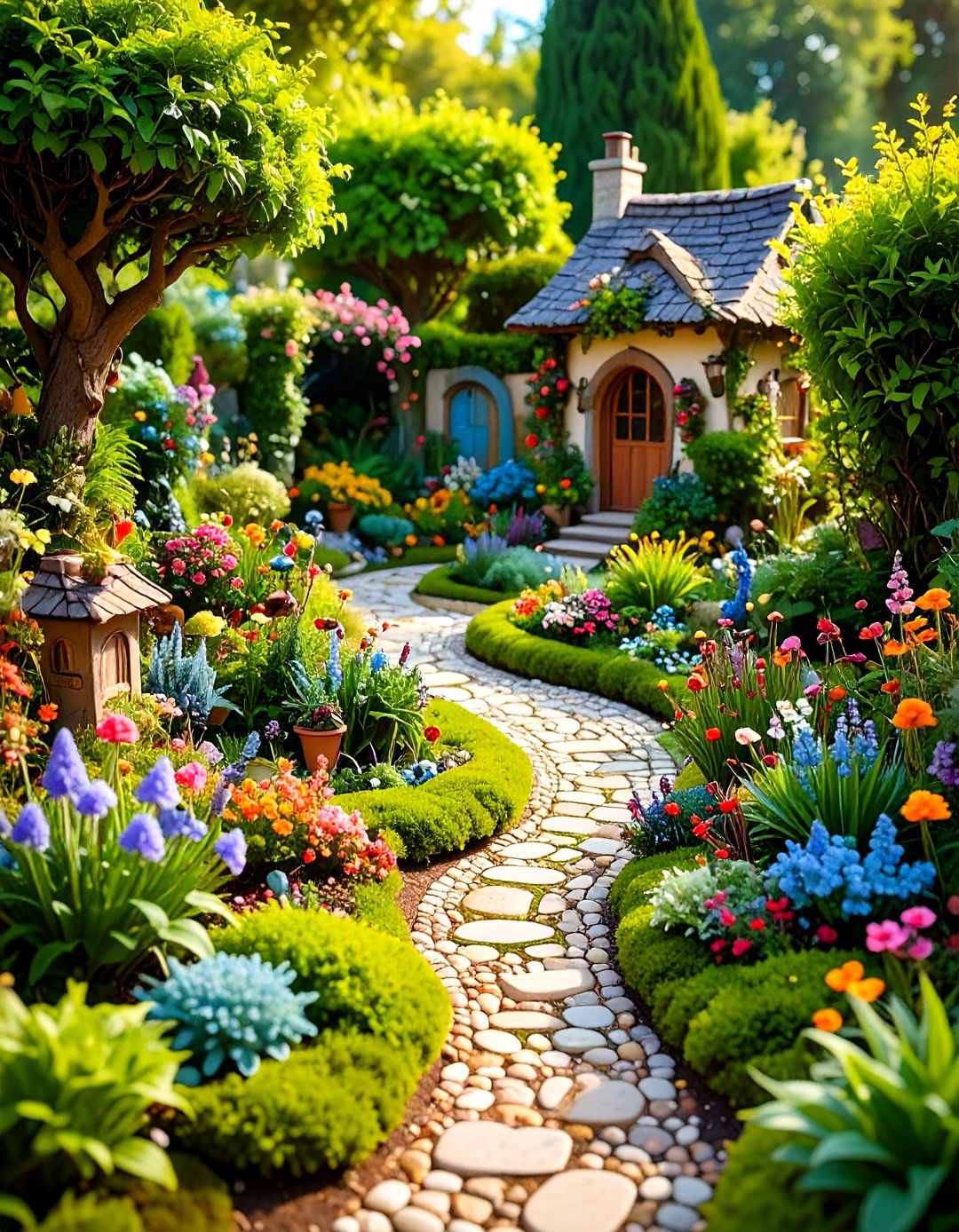
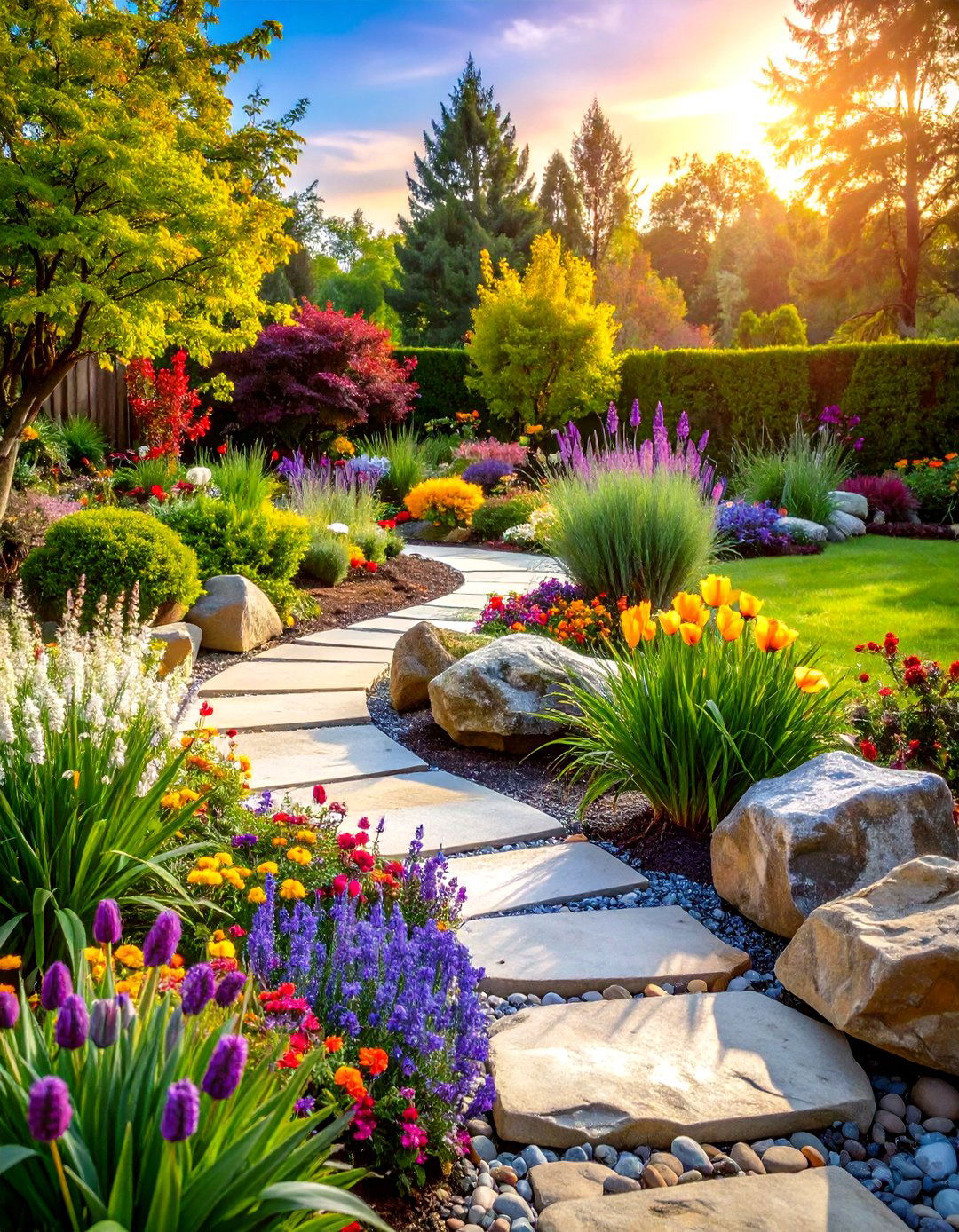
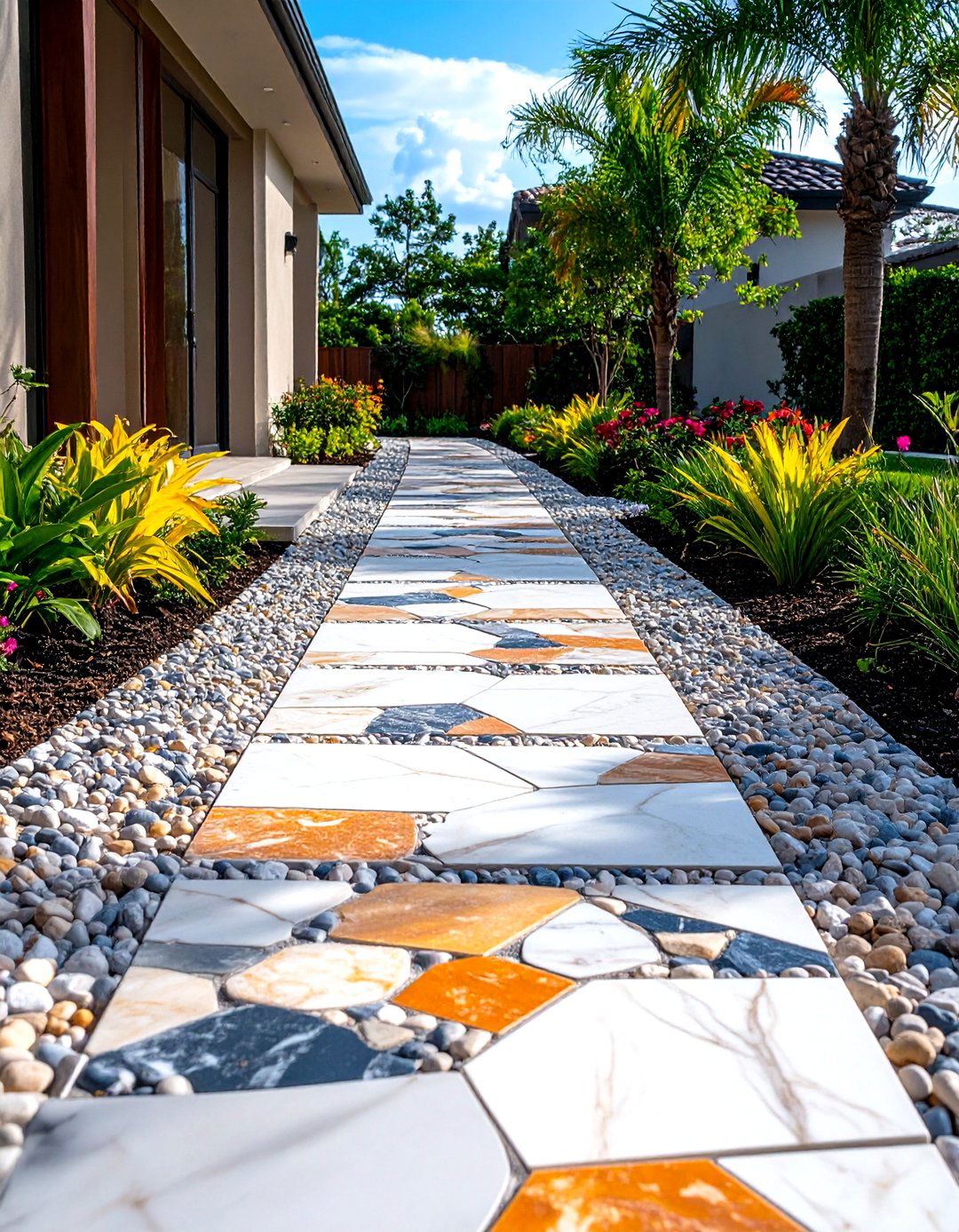
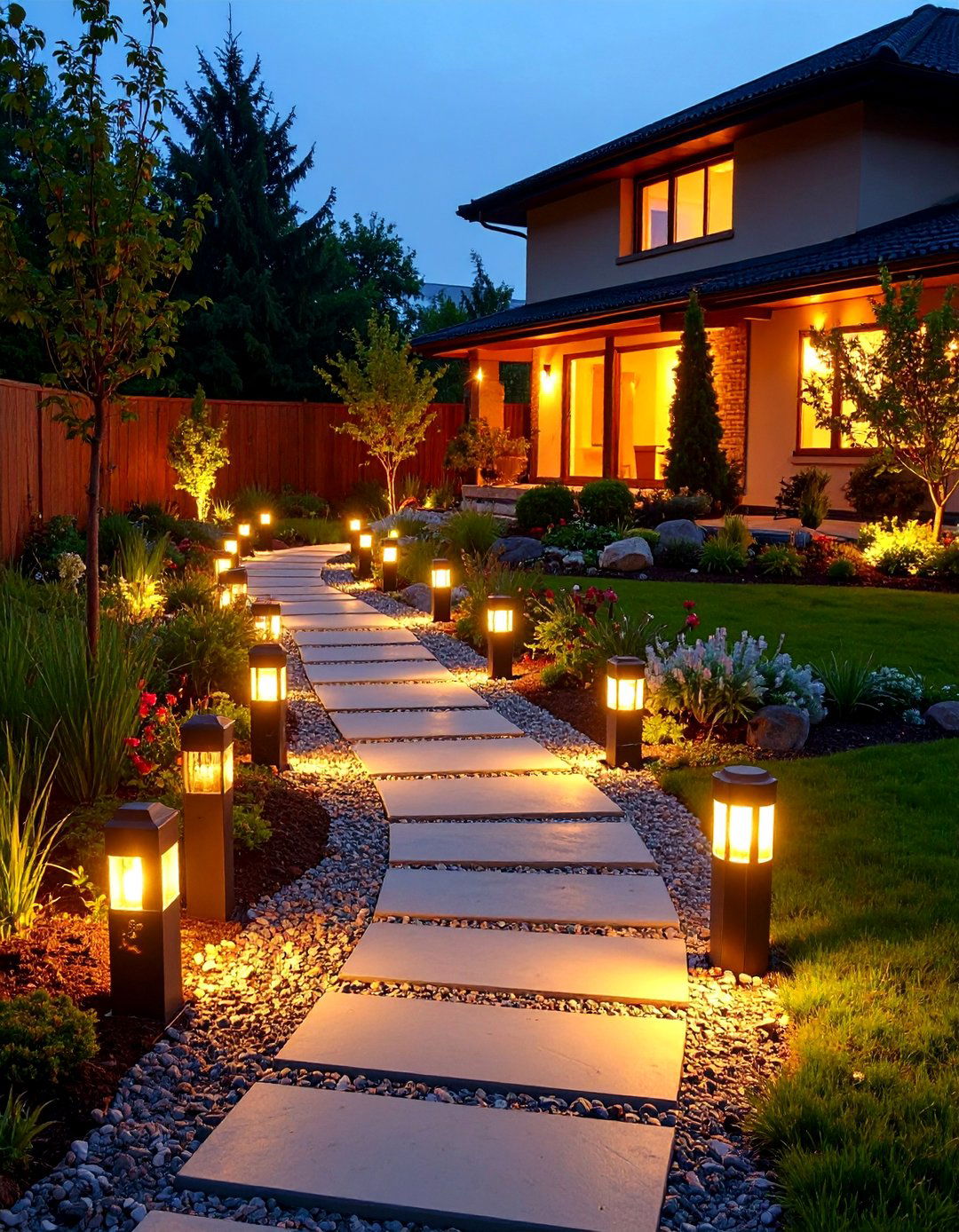

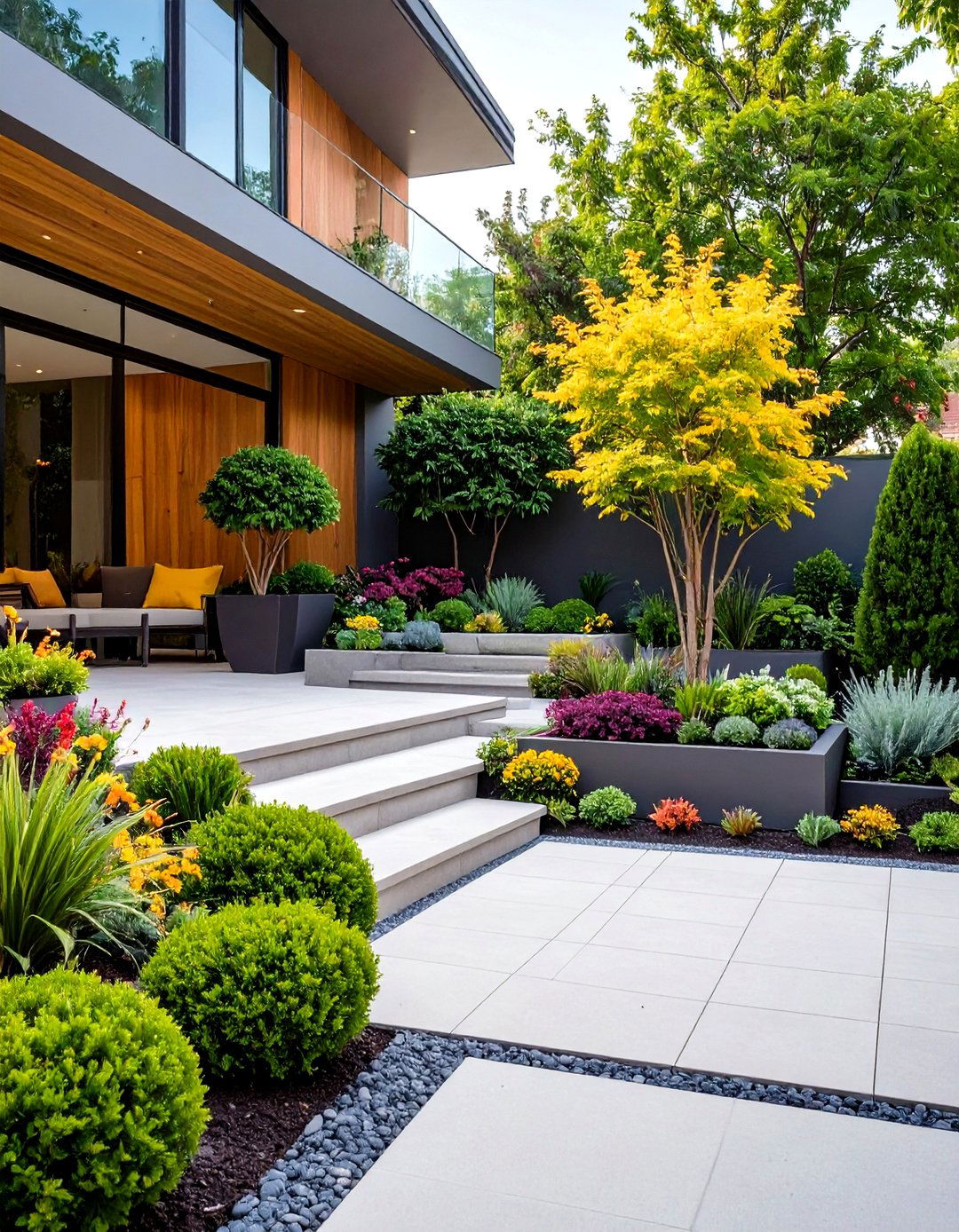


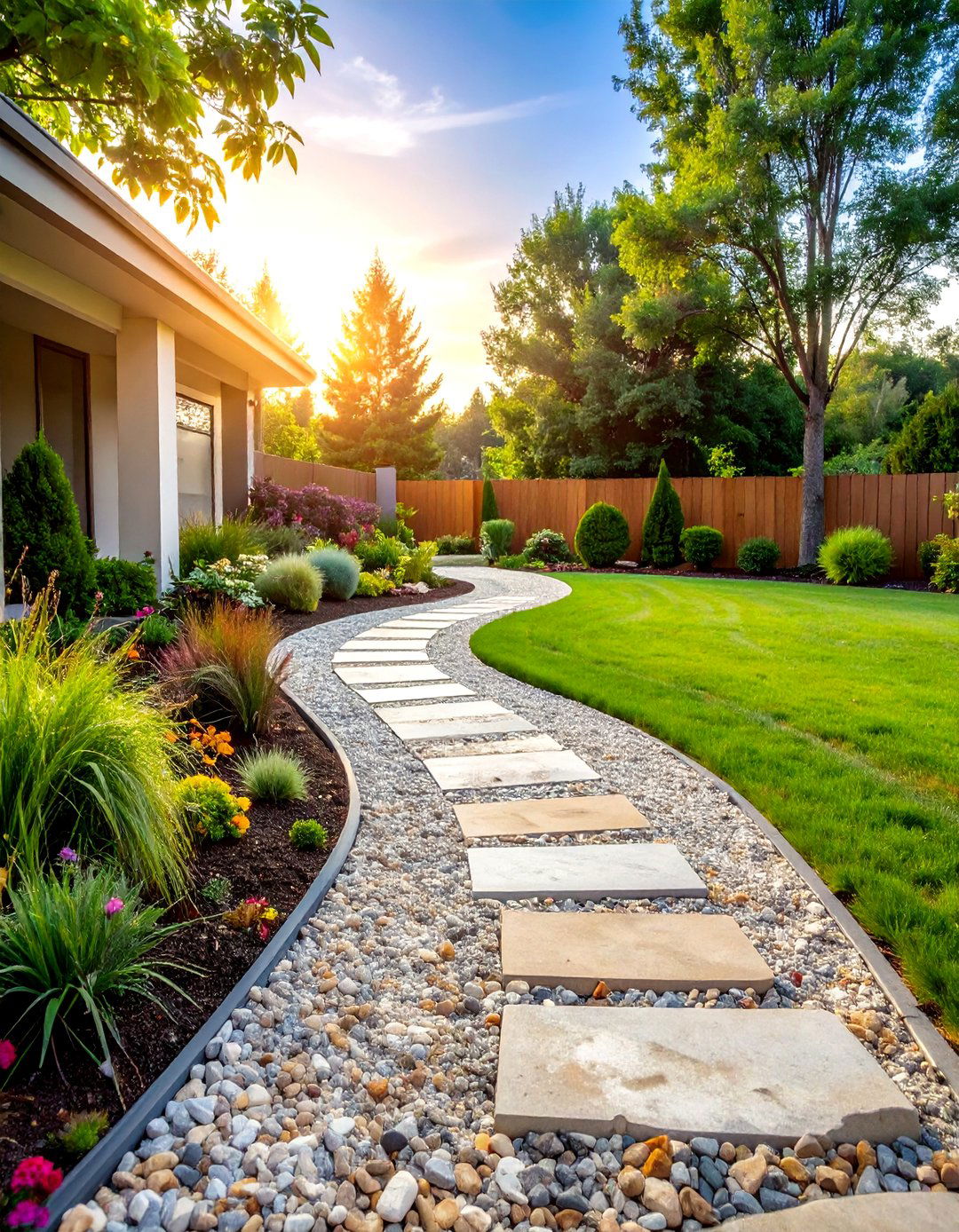
Leave a Reply